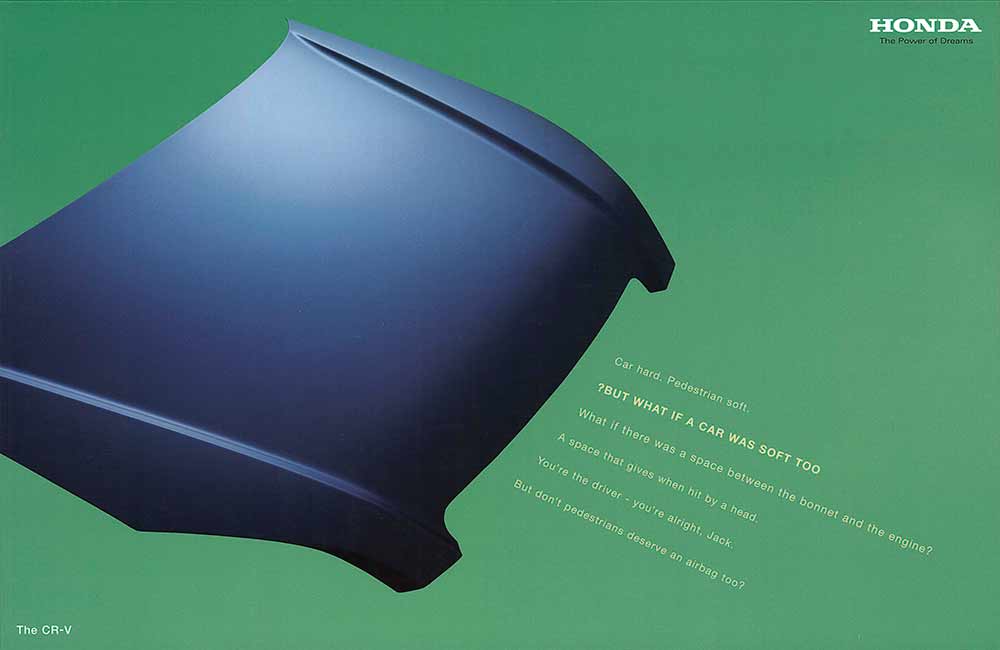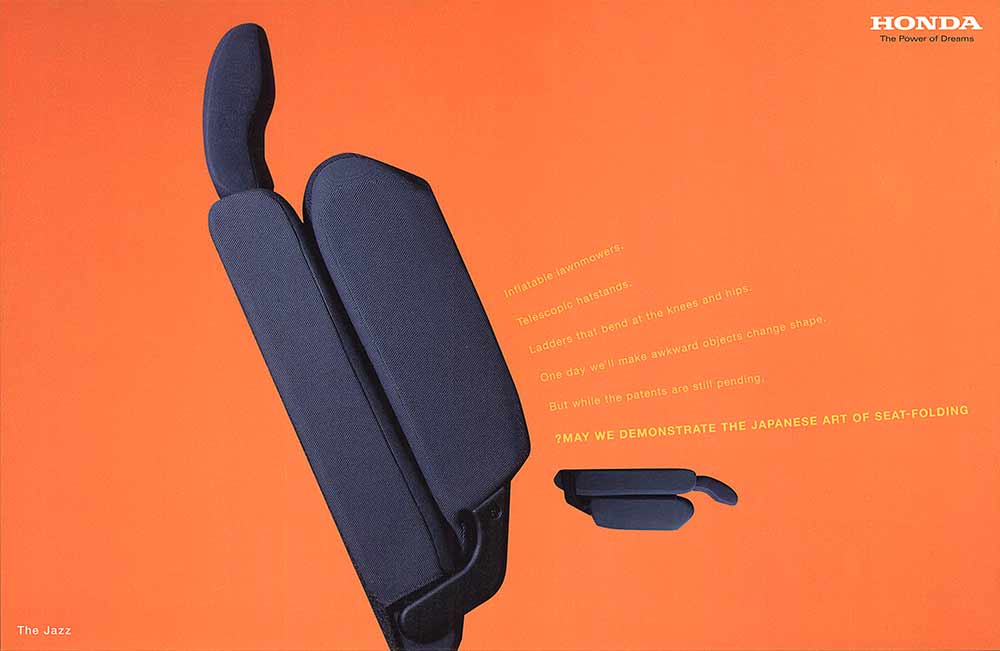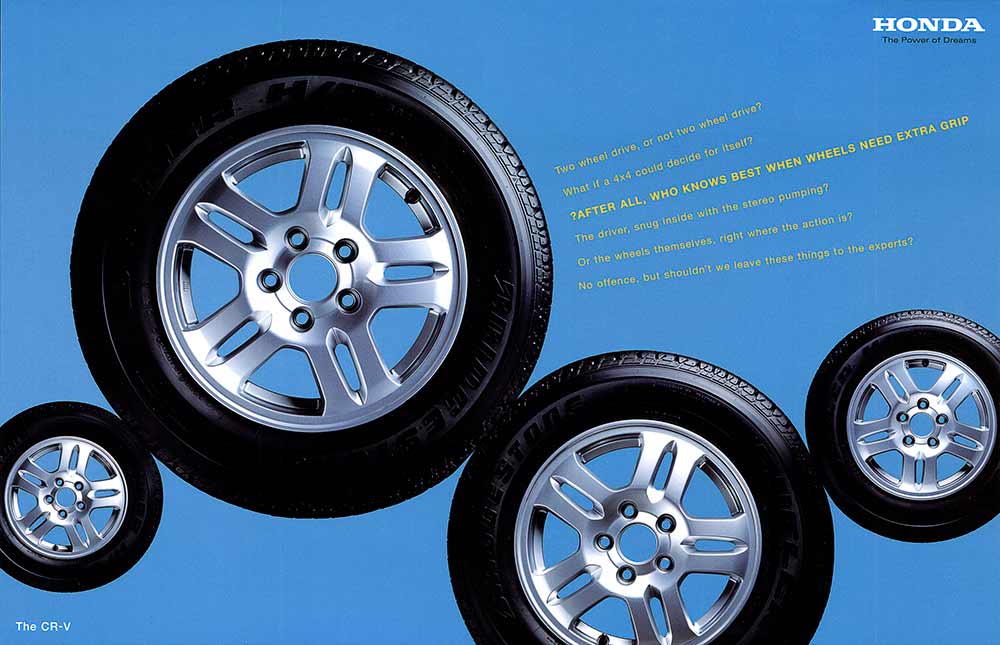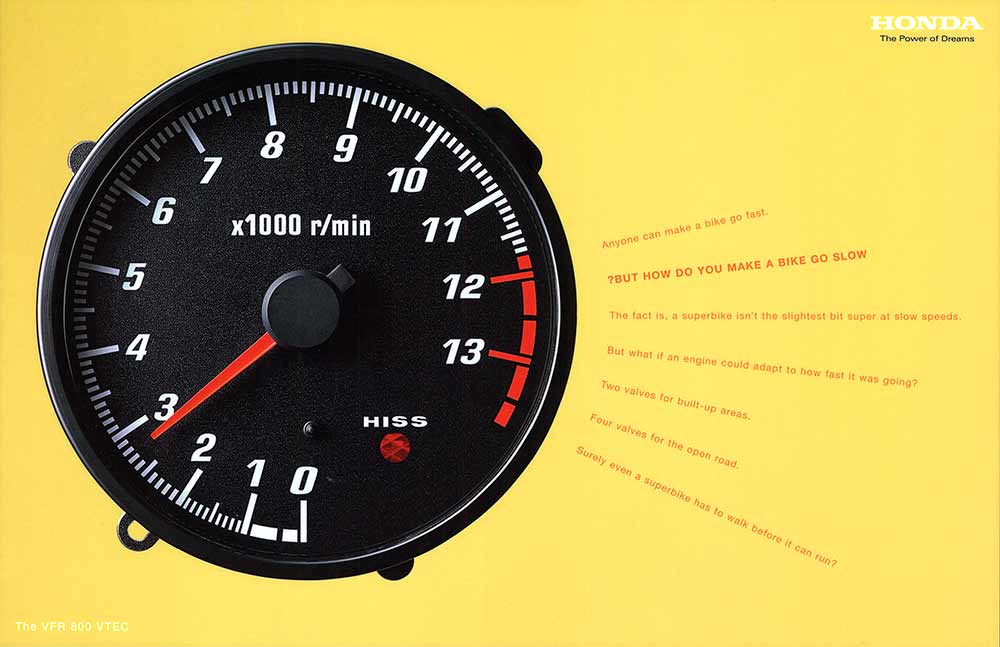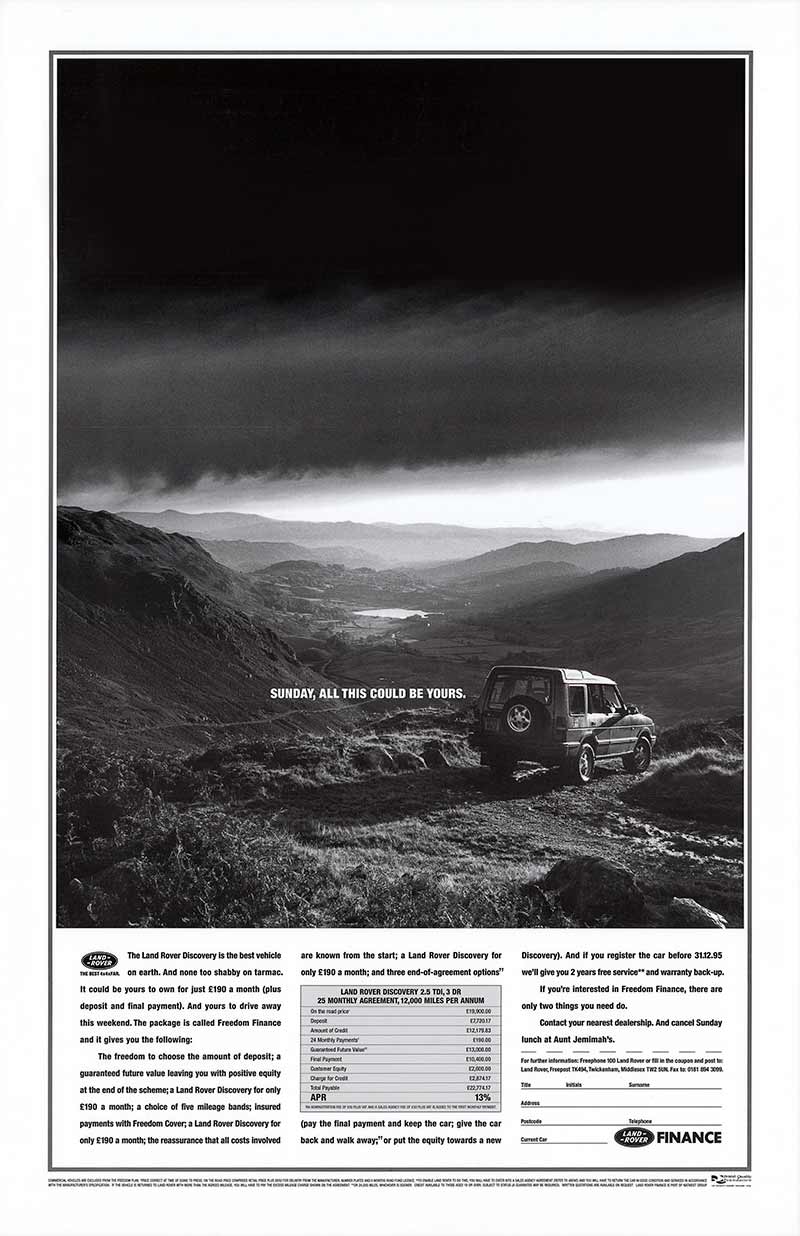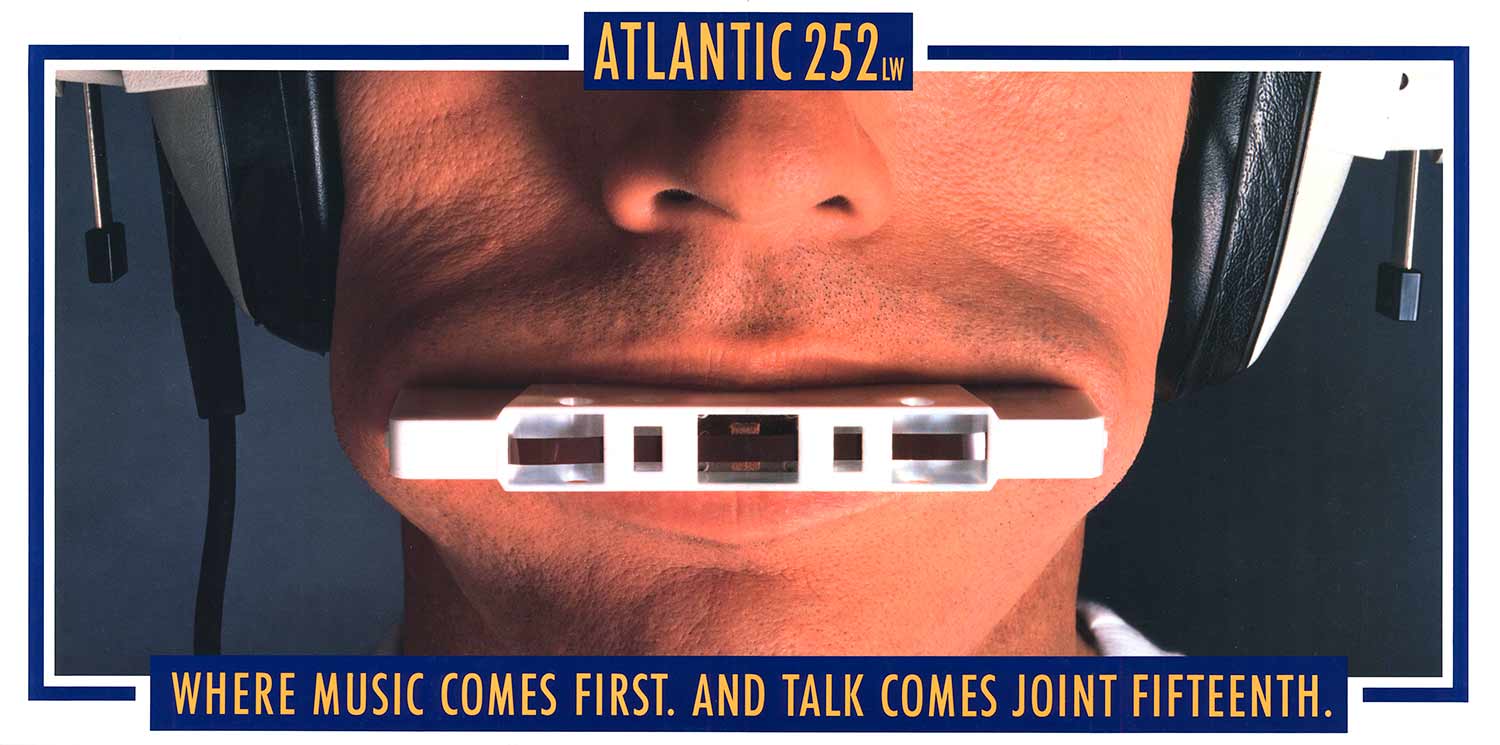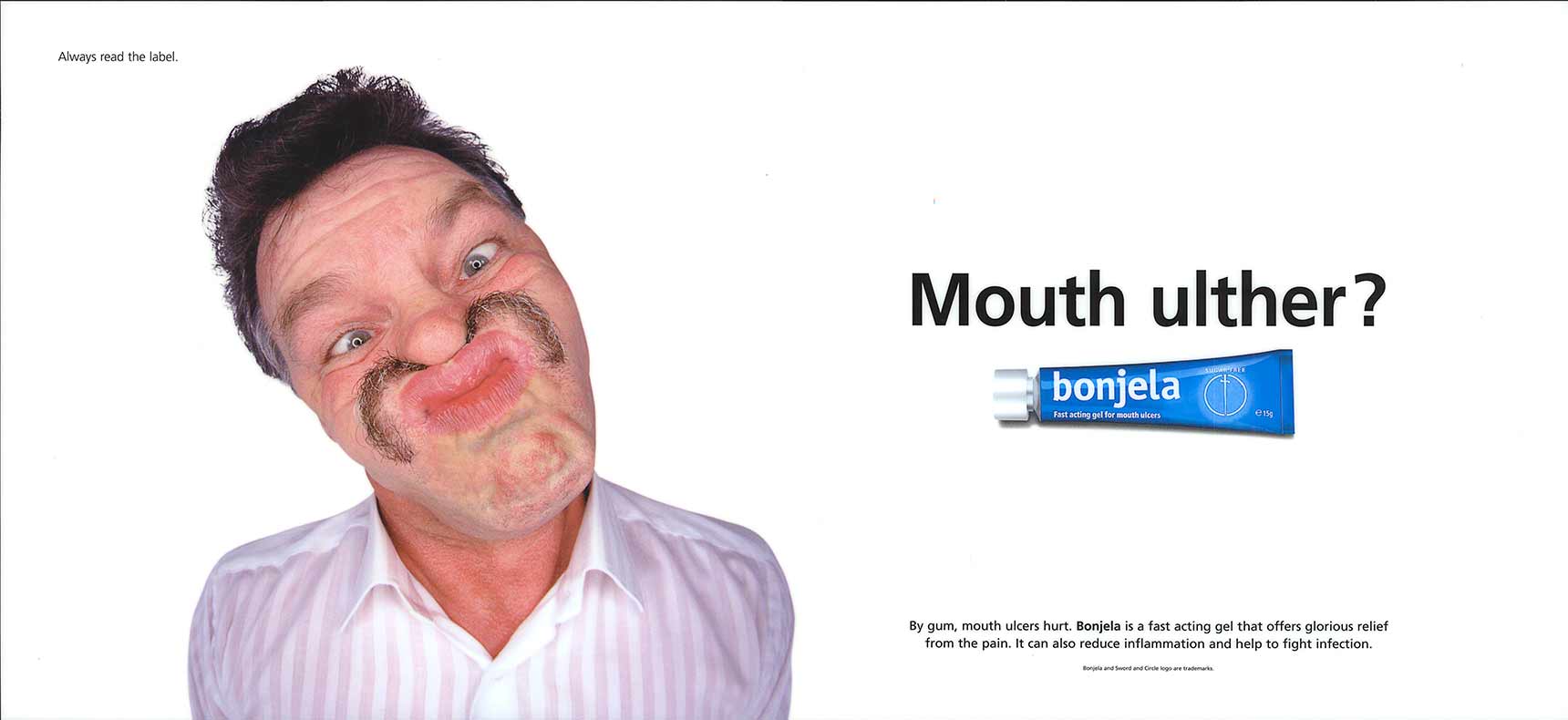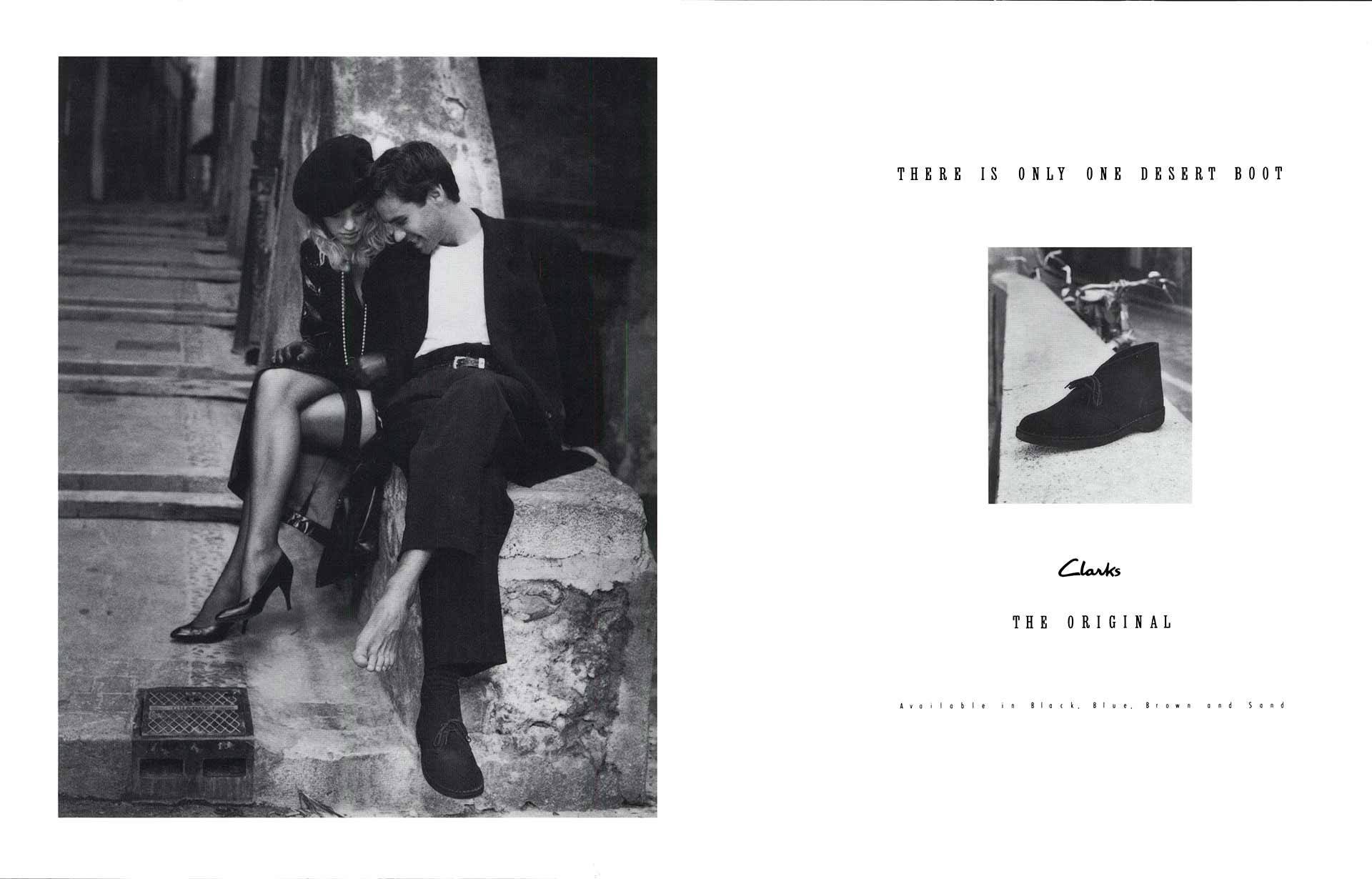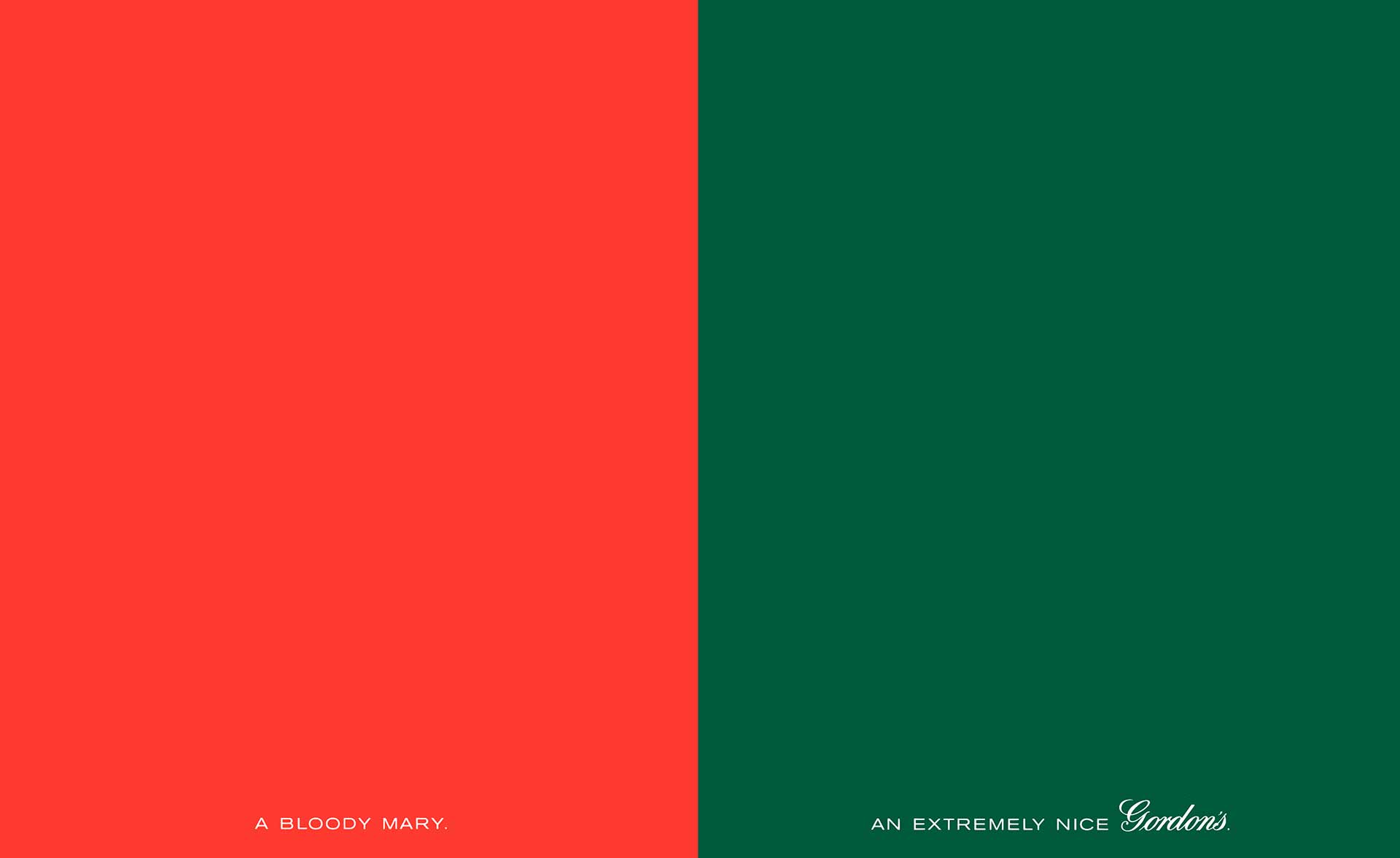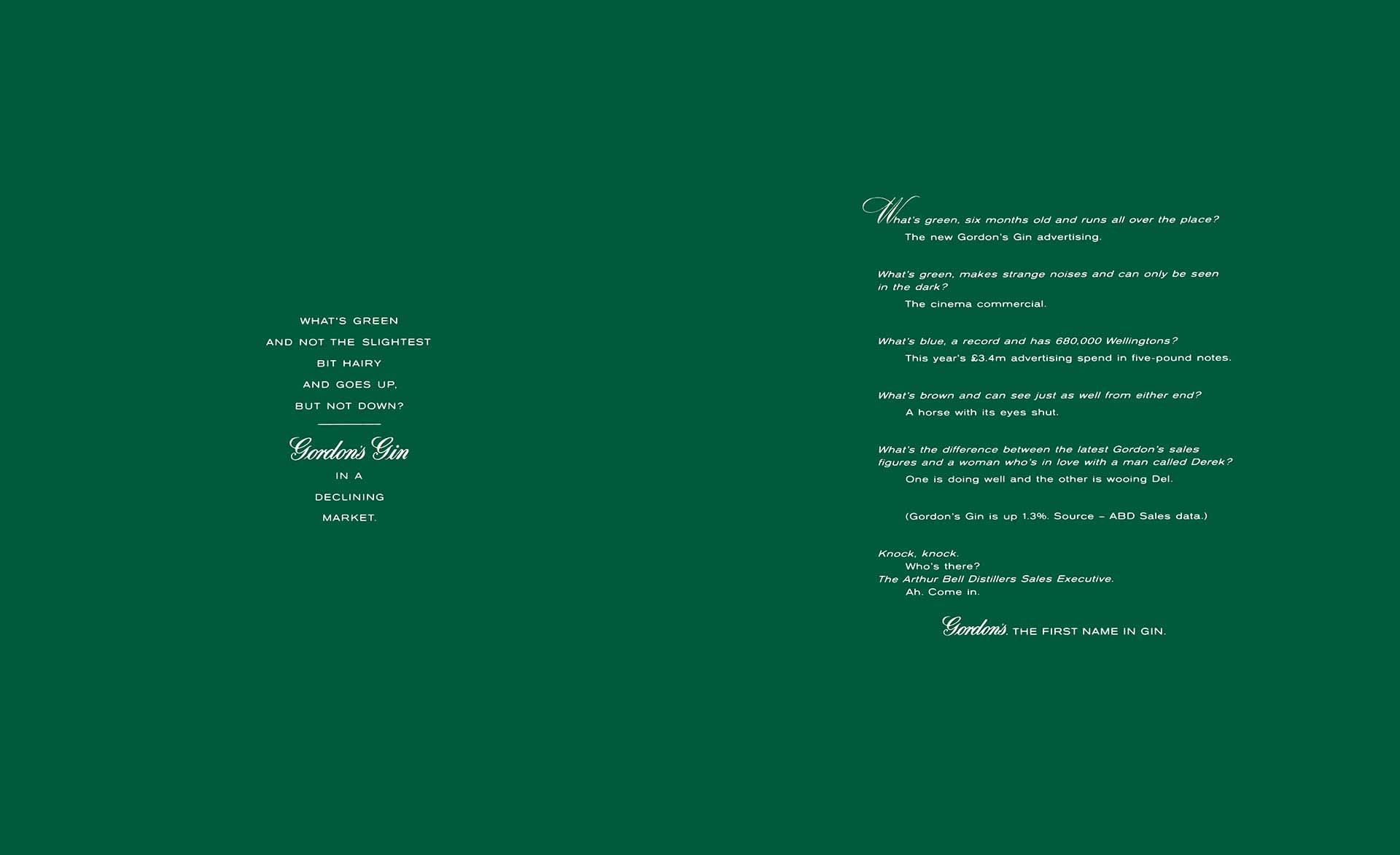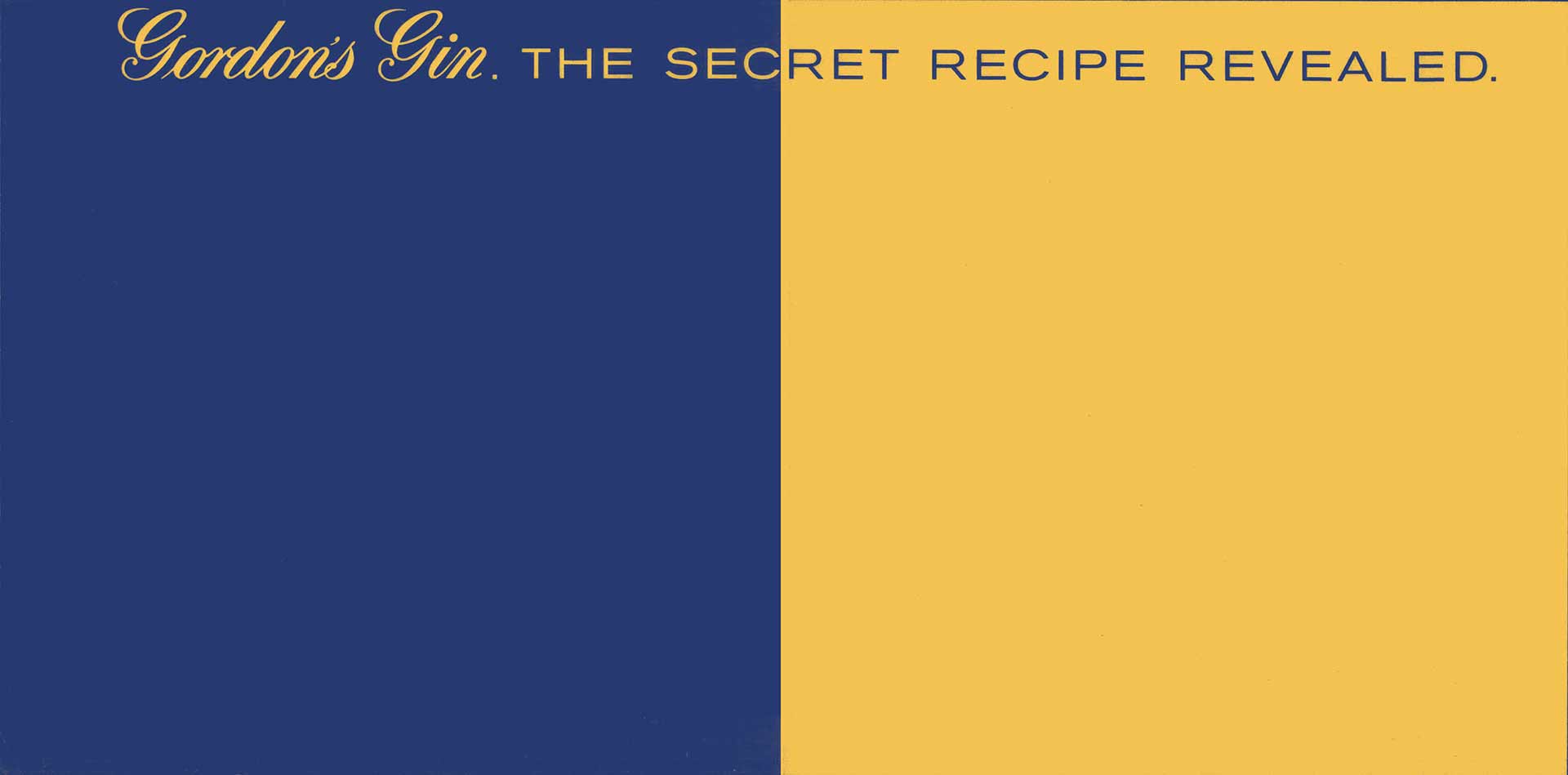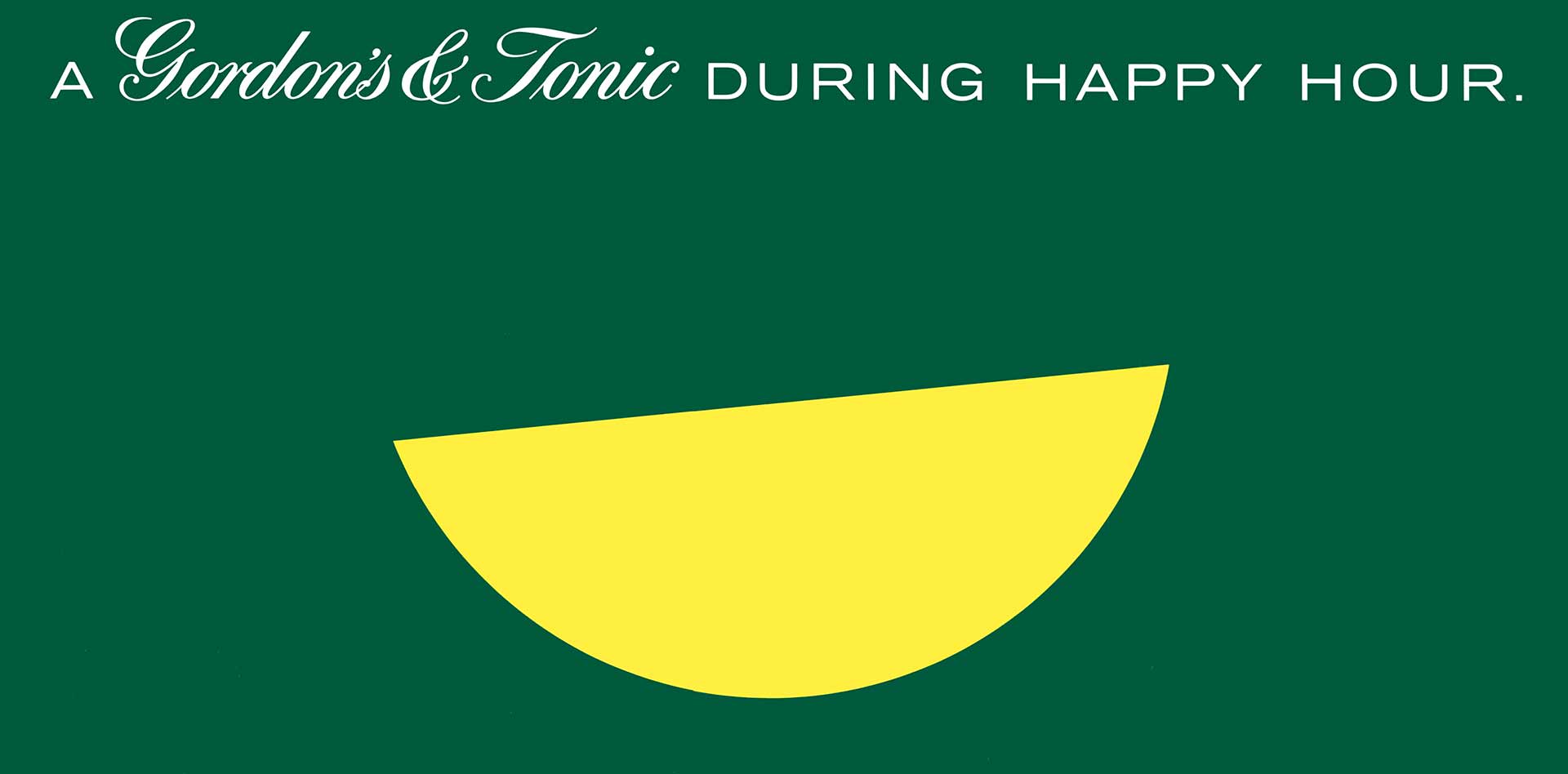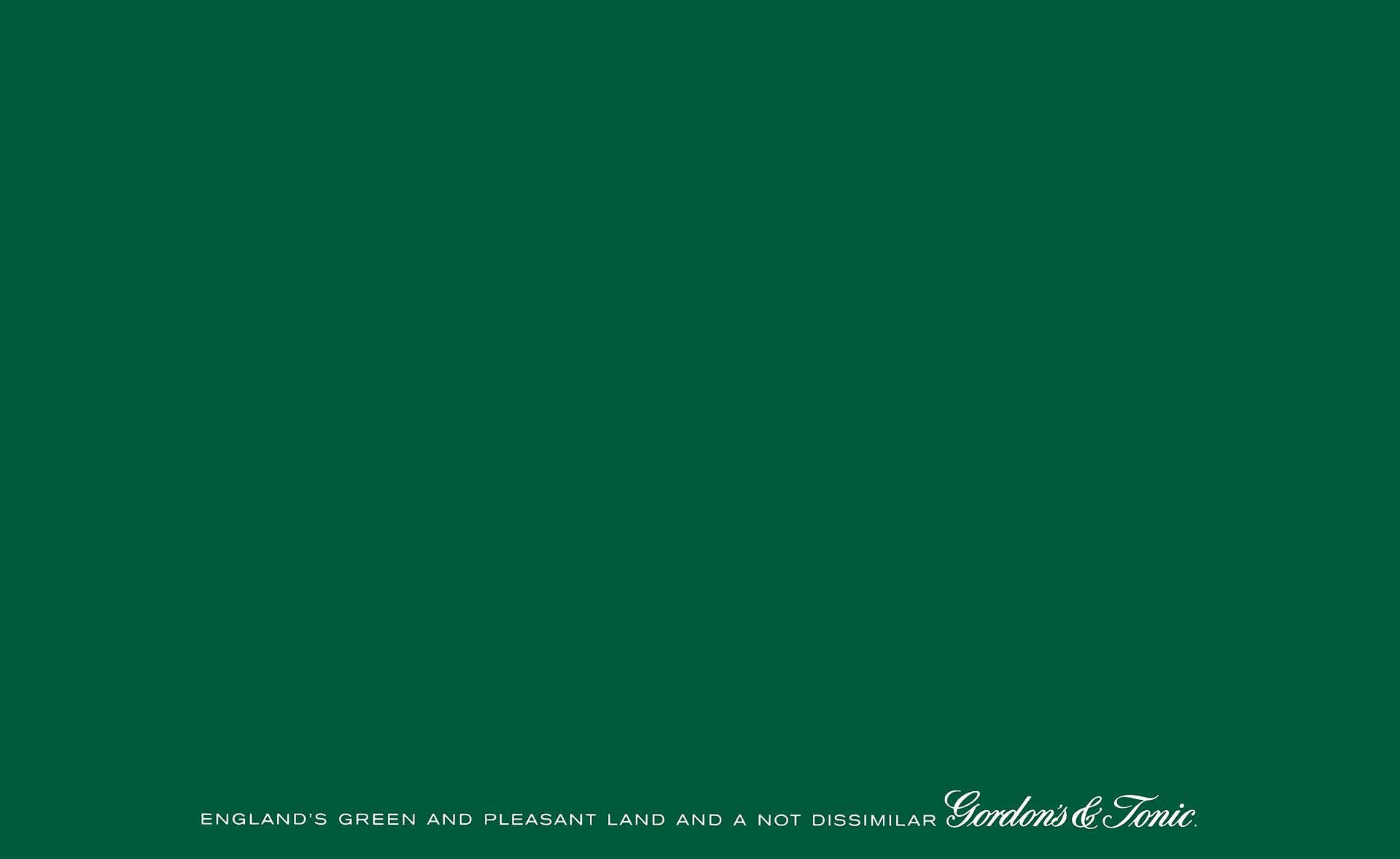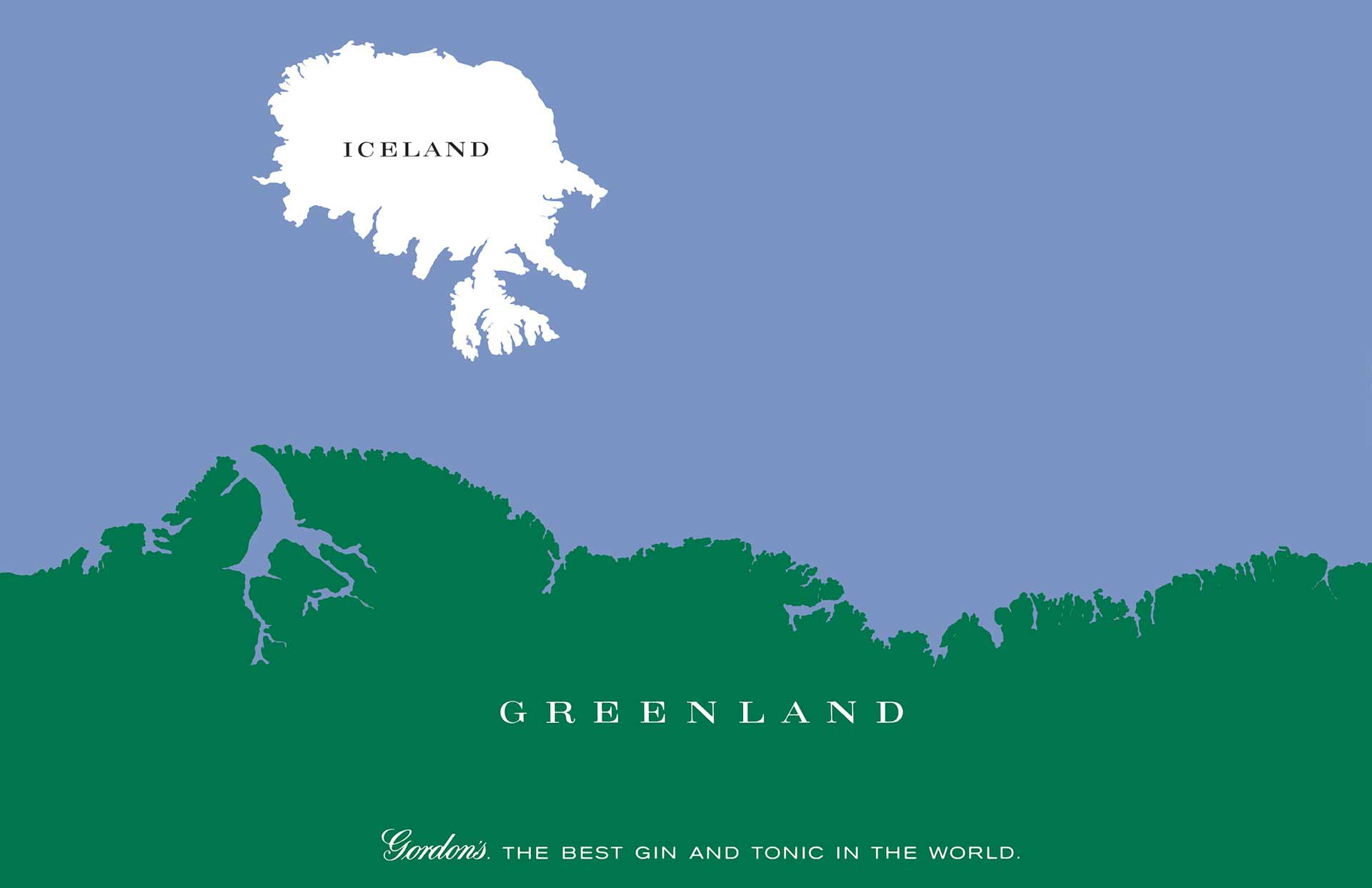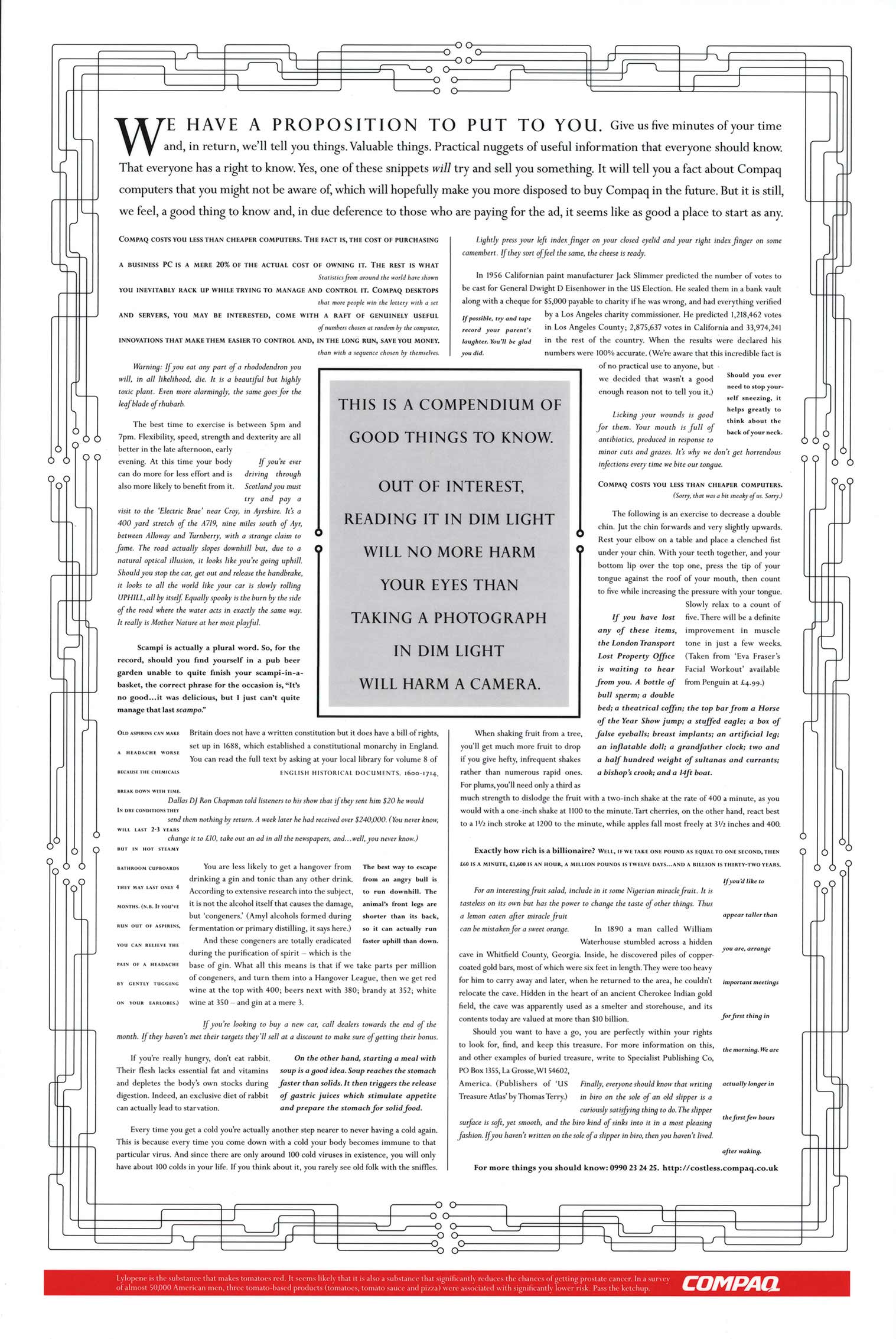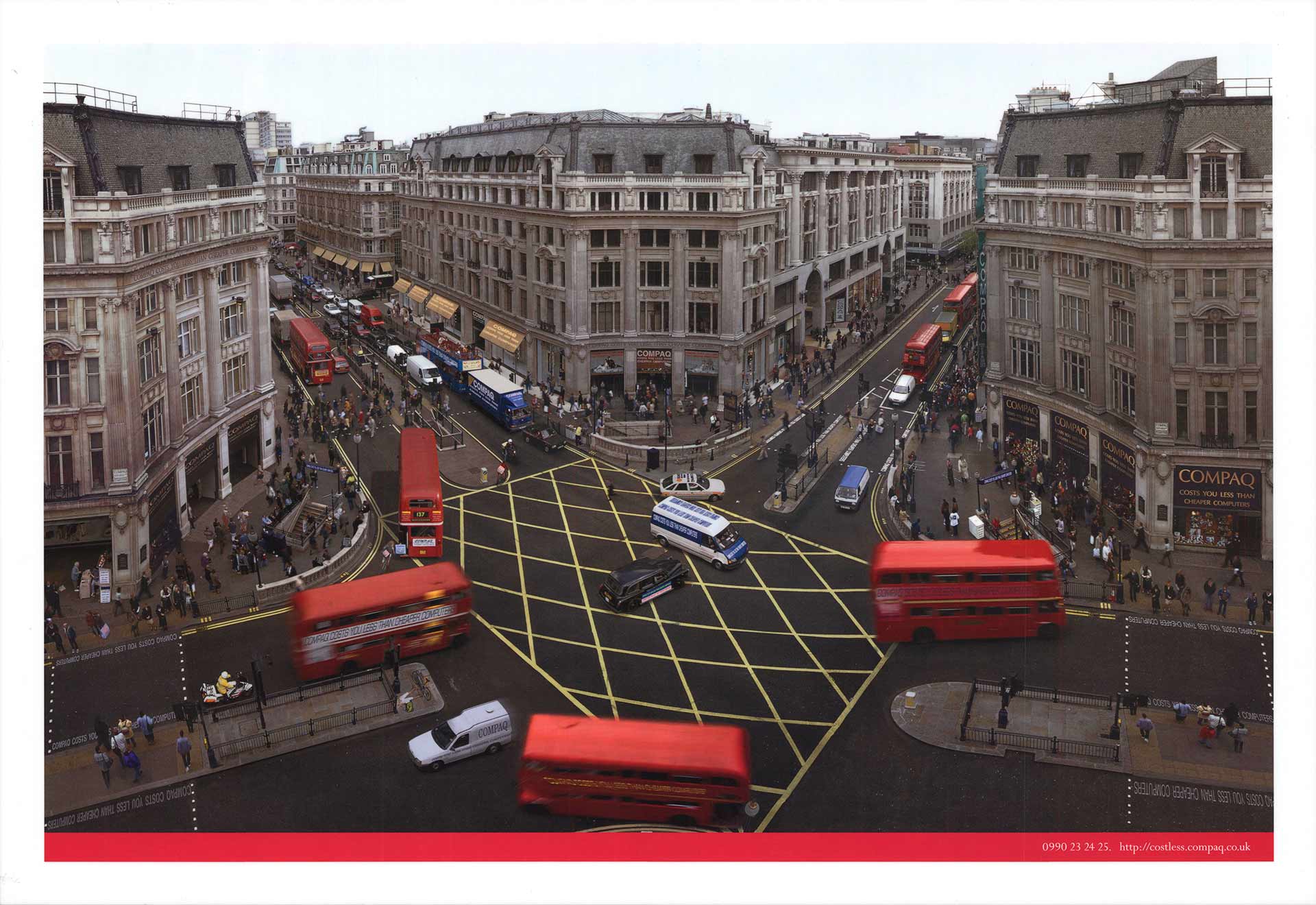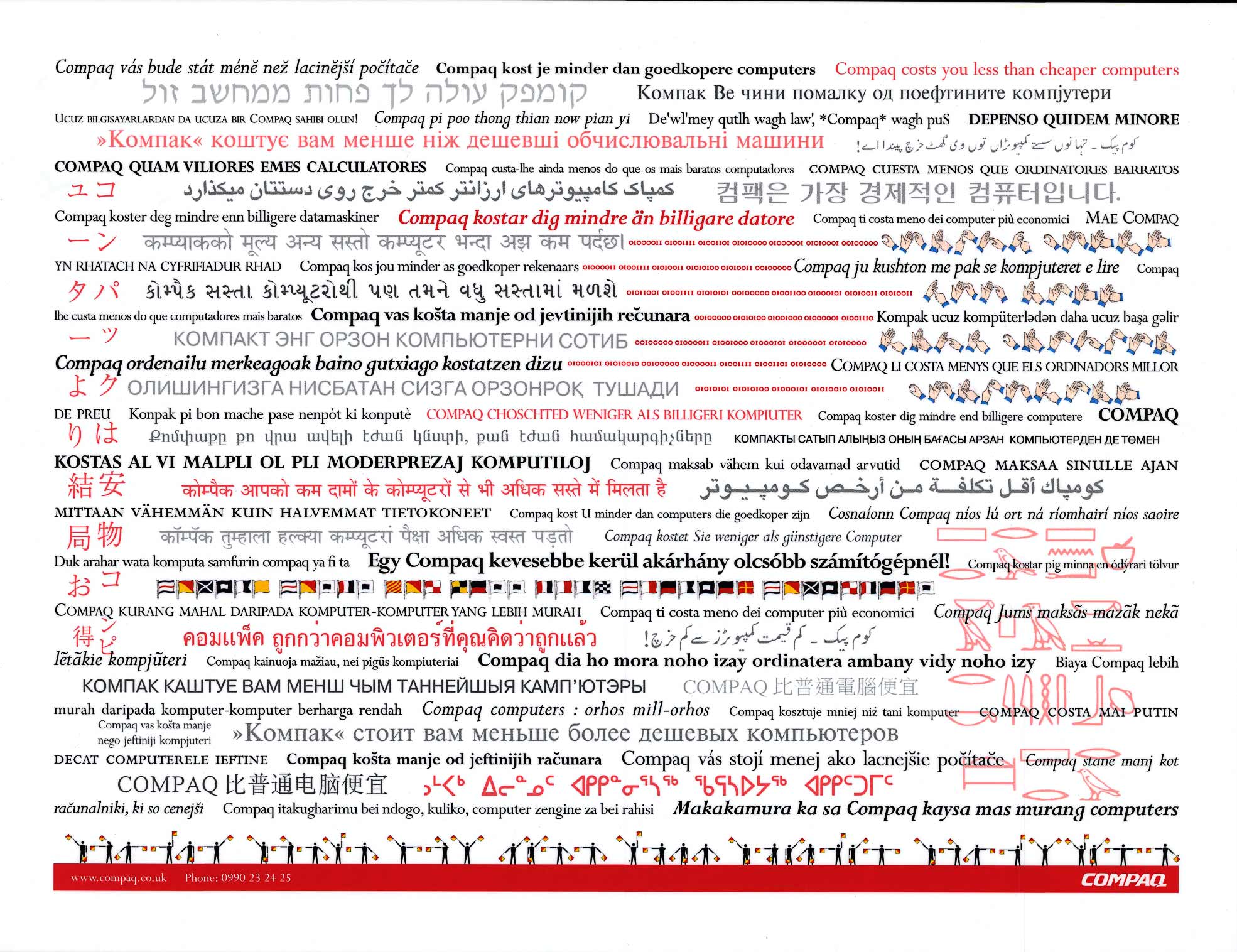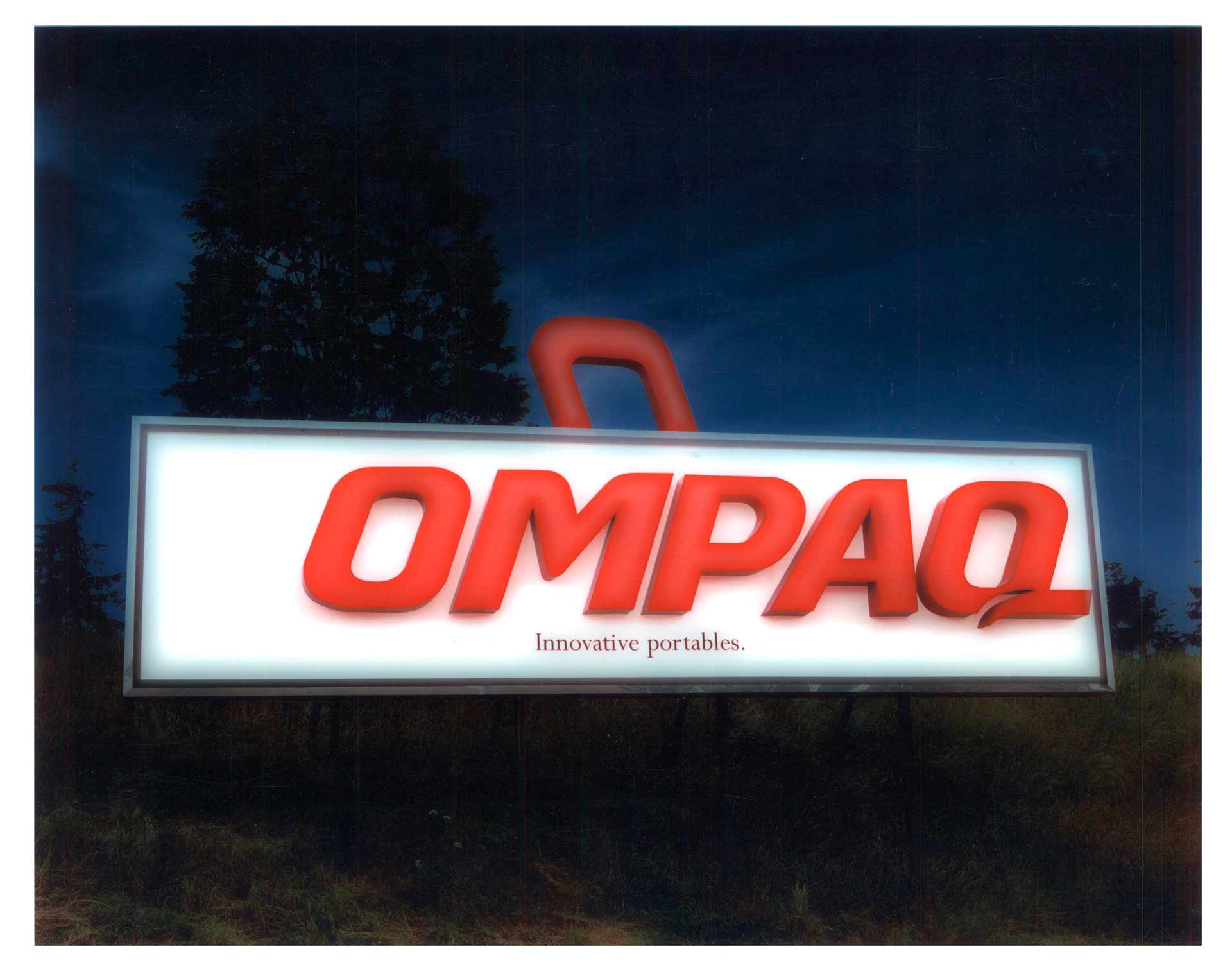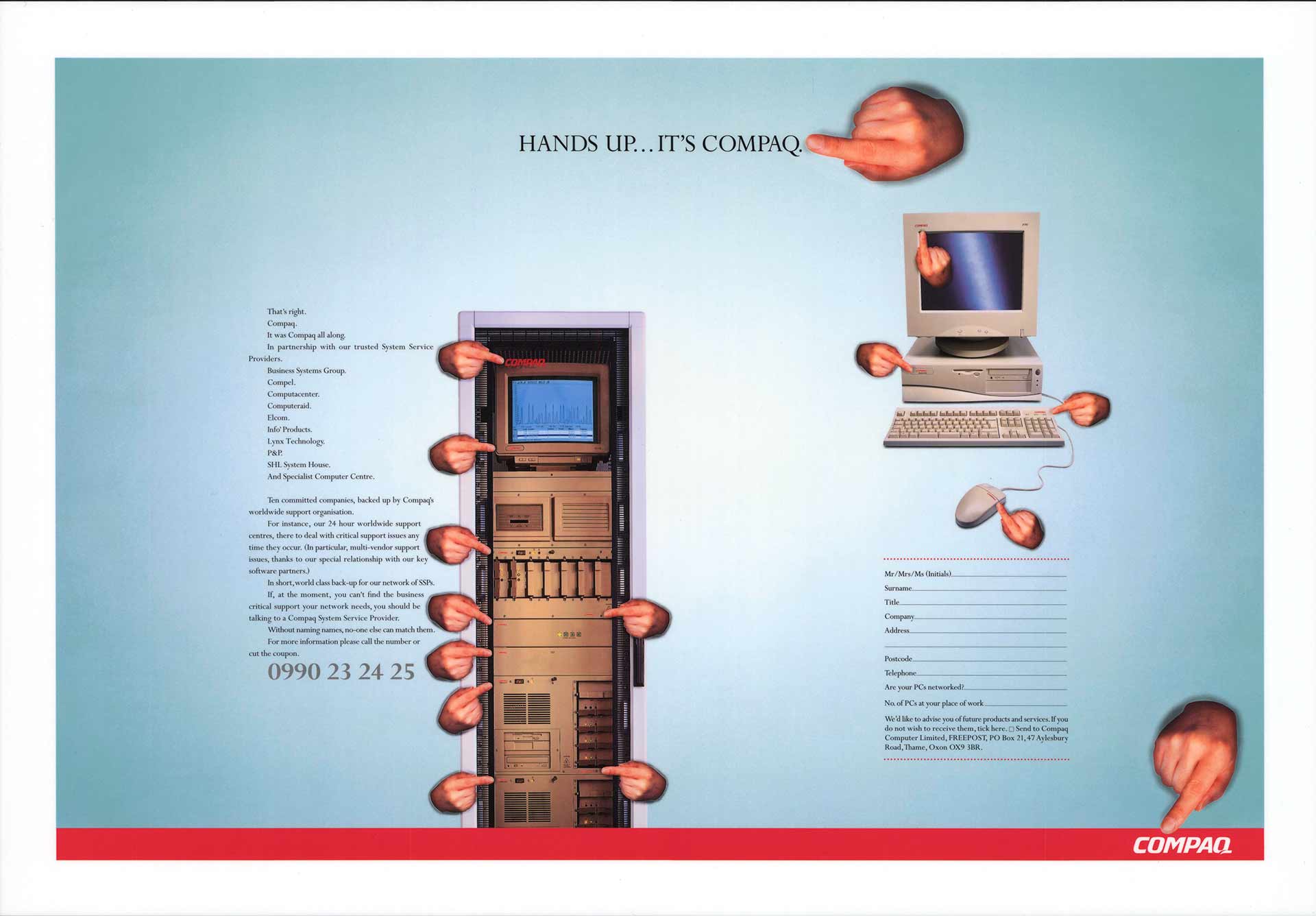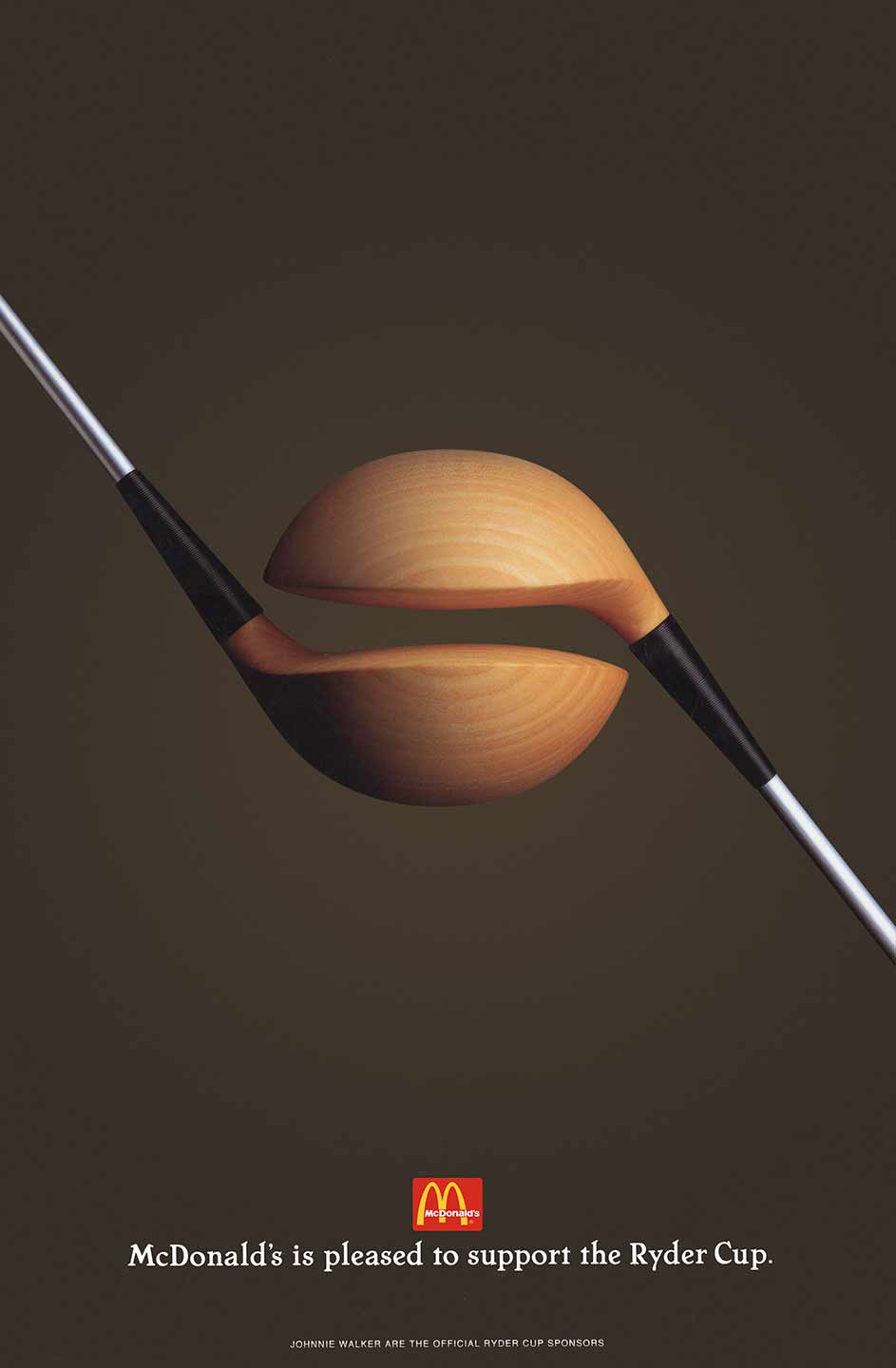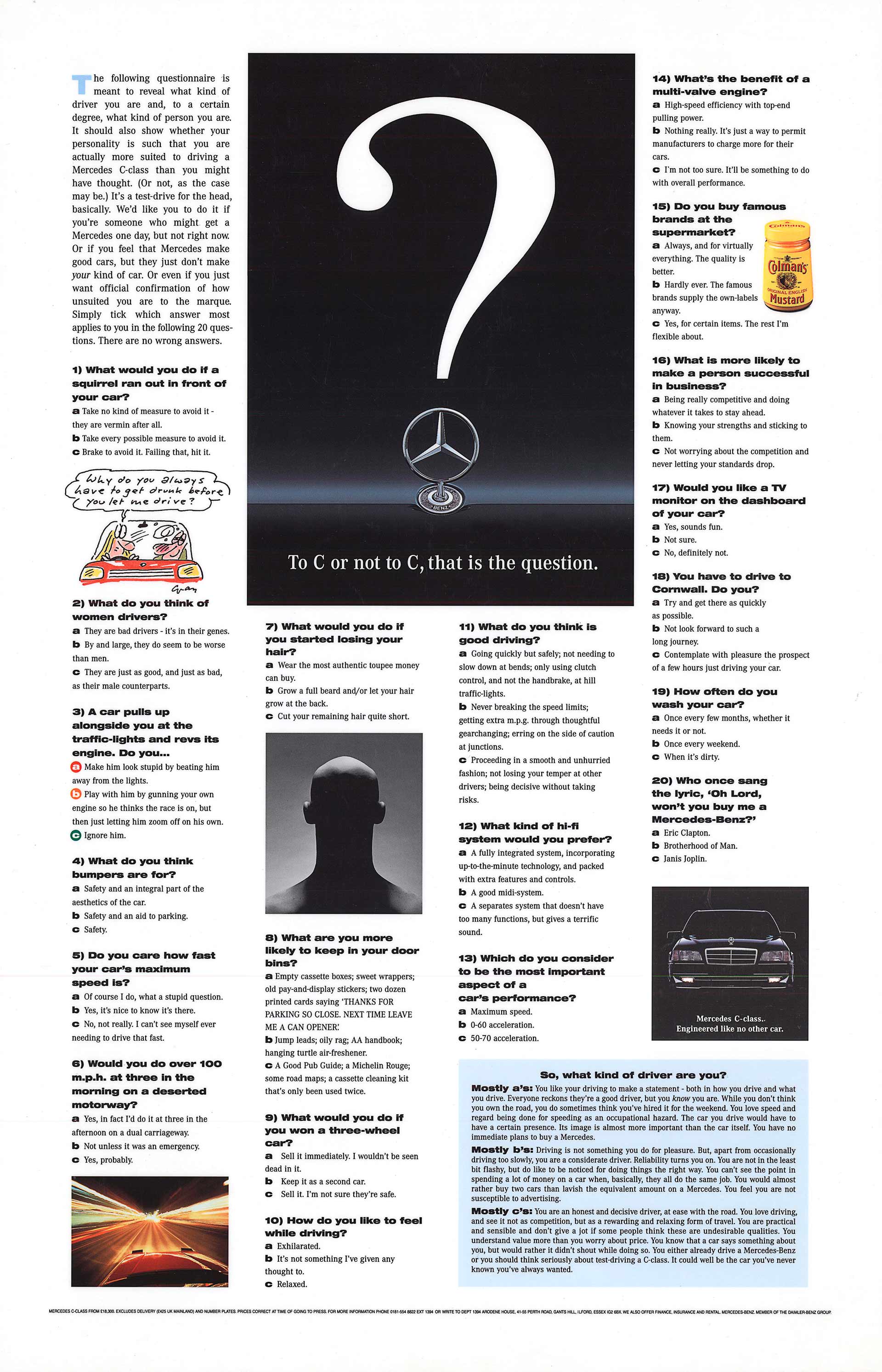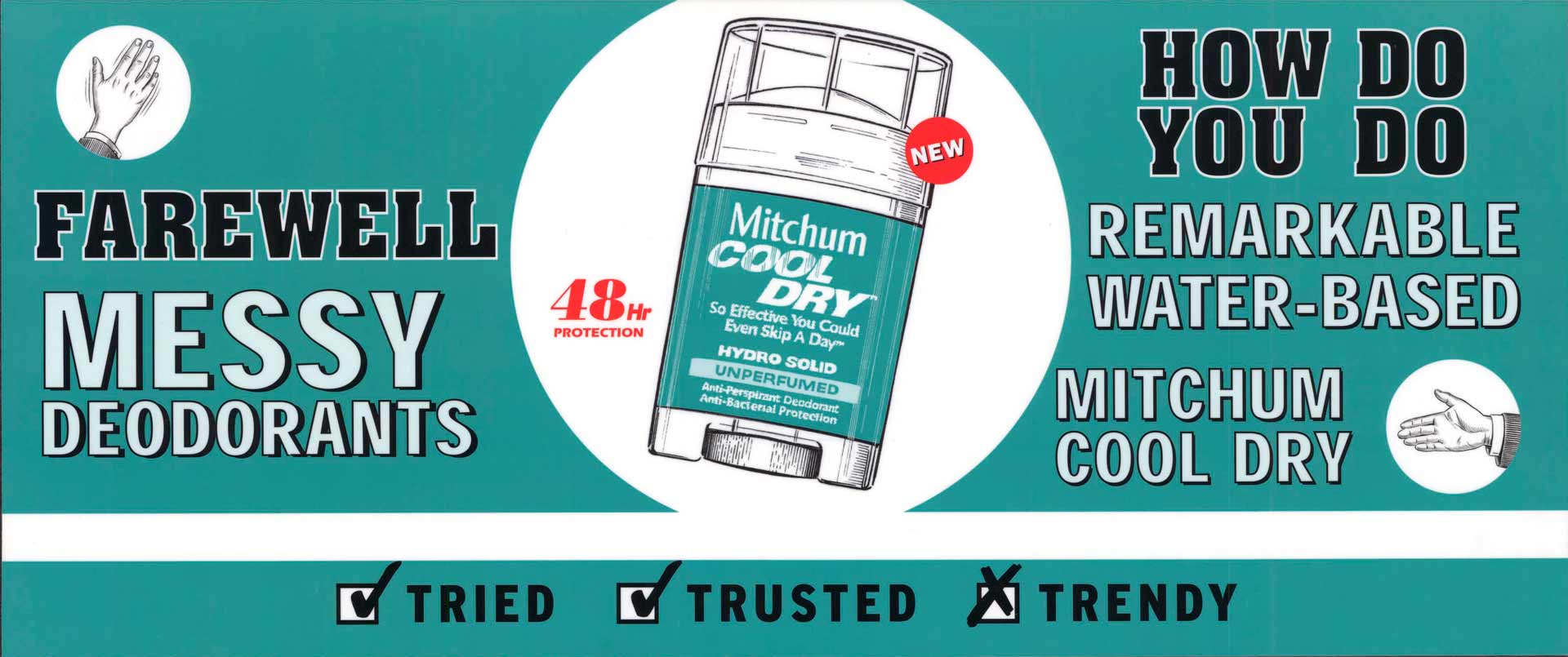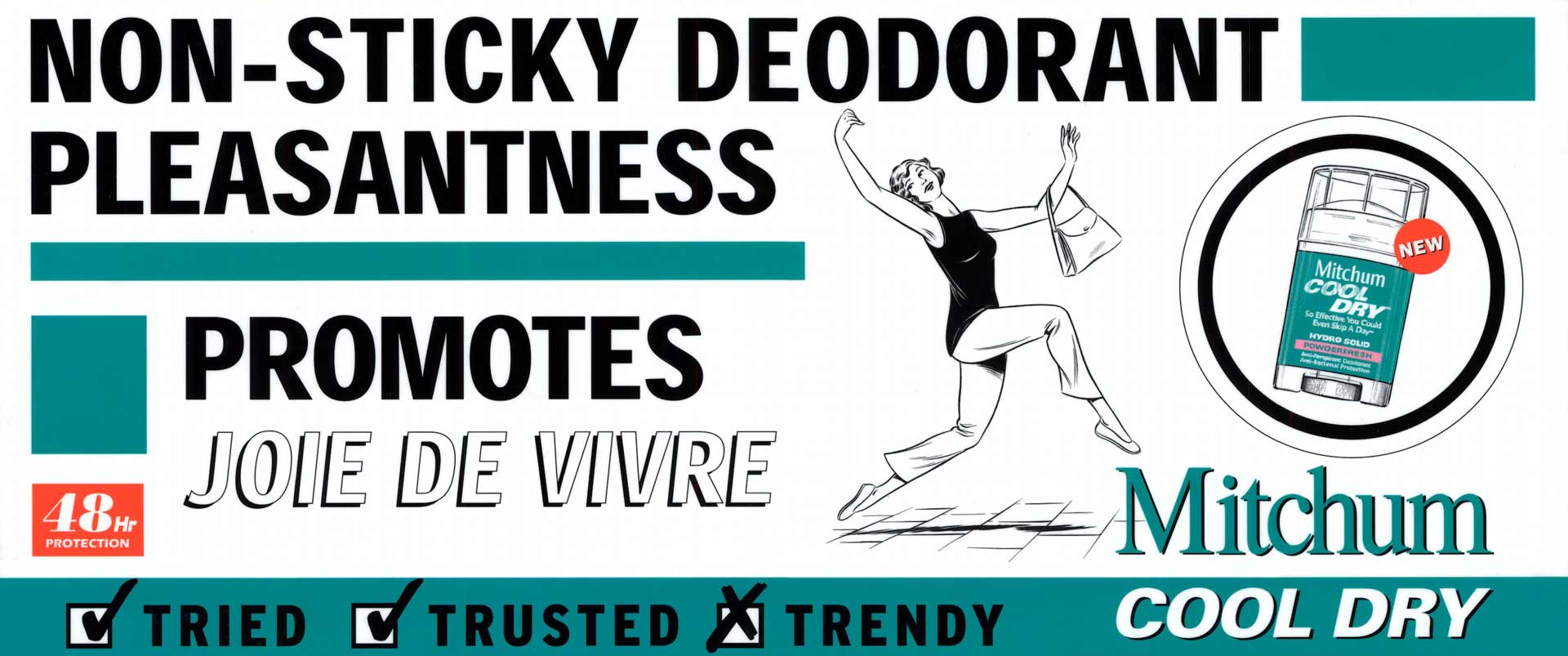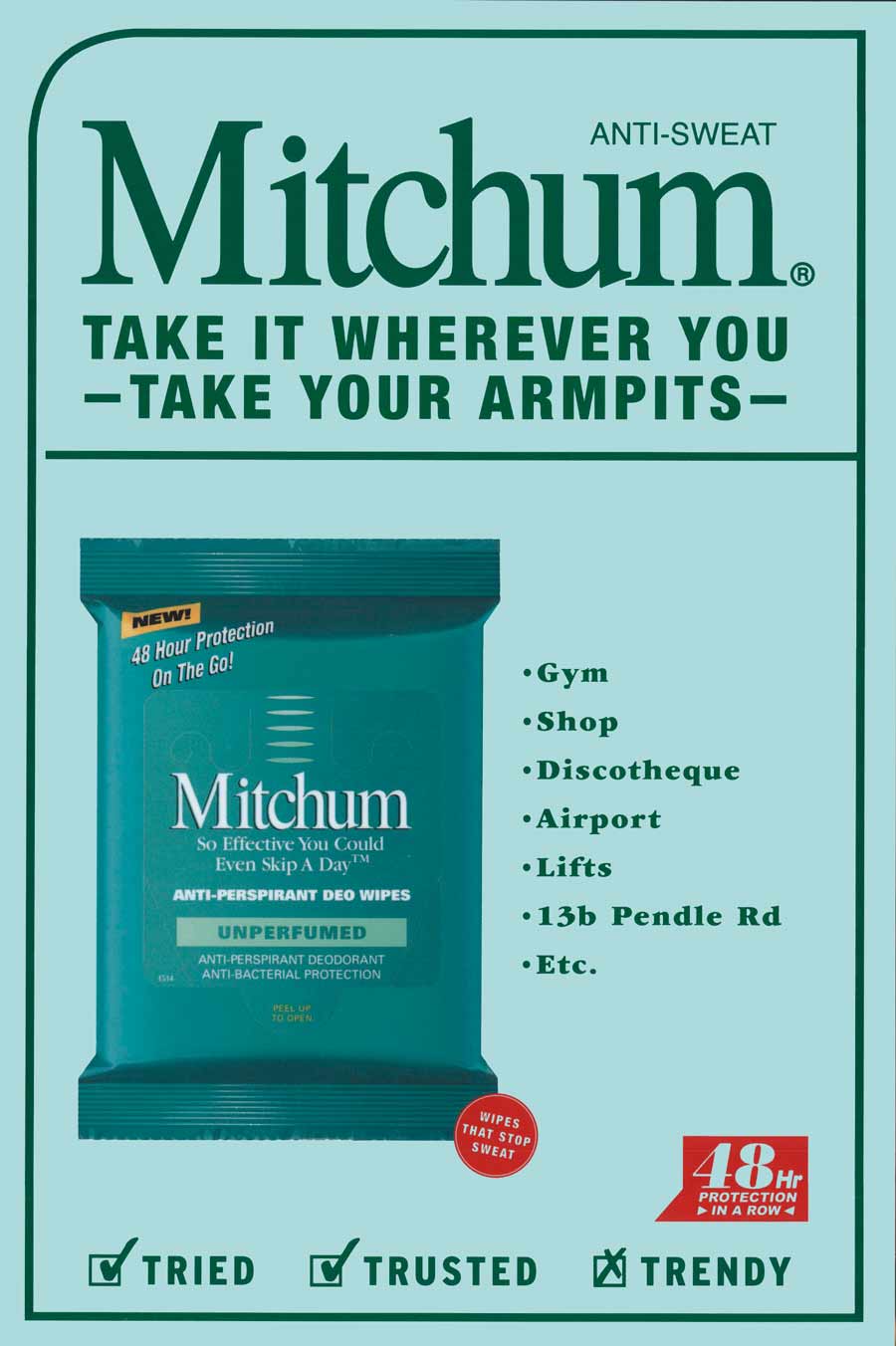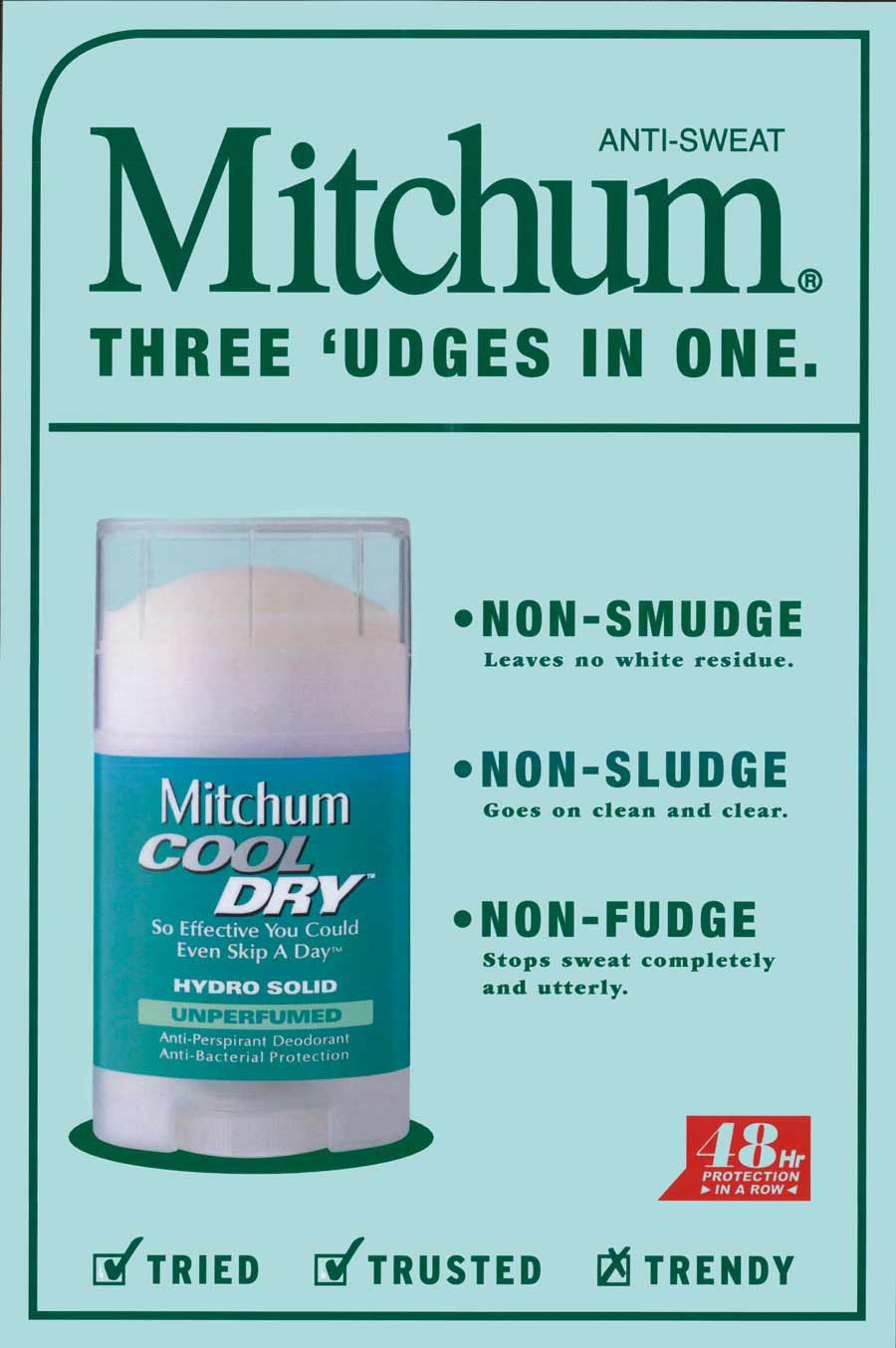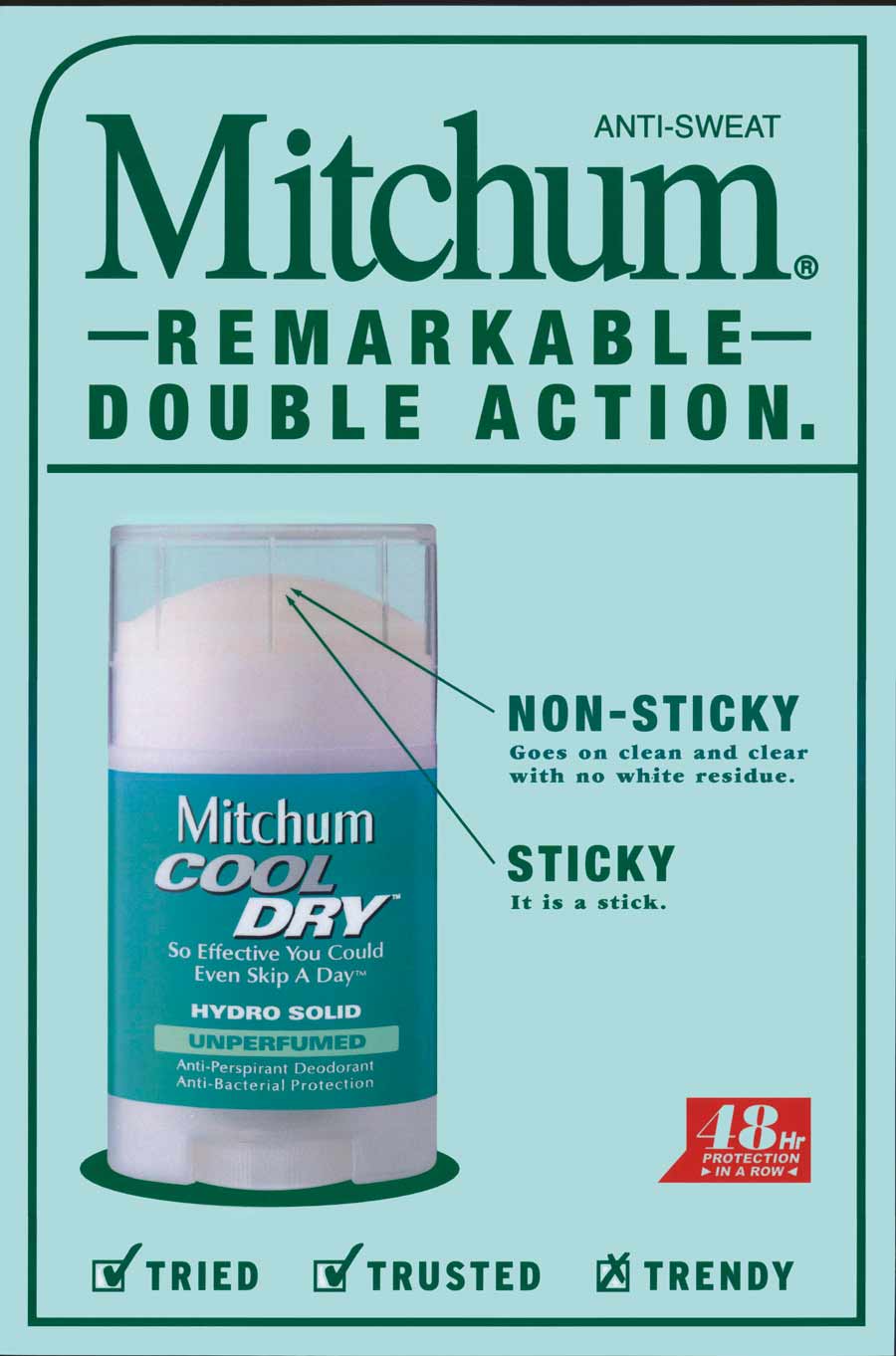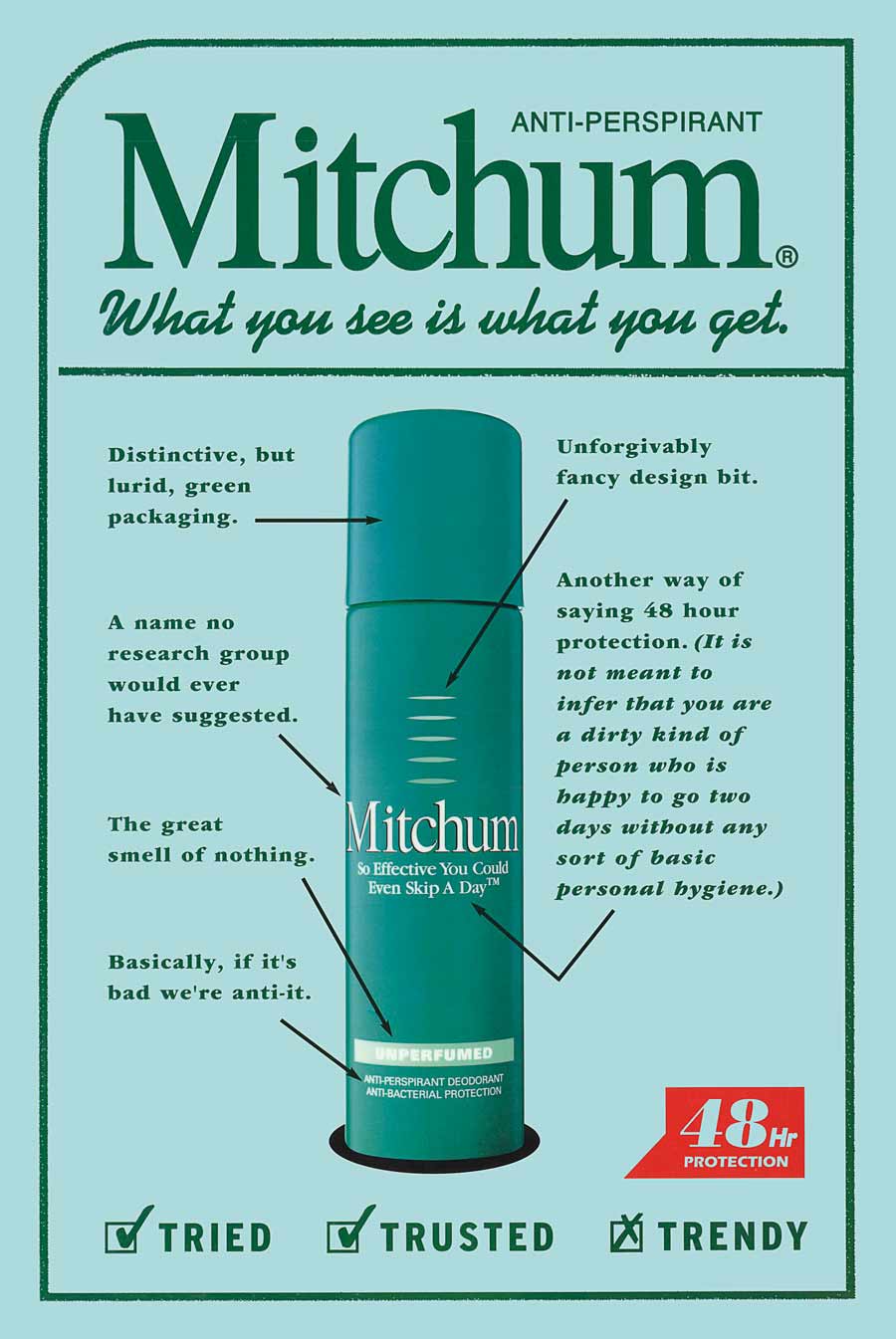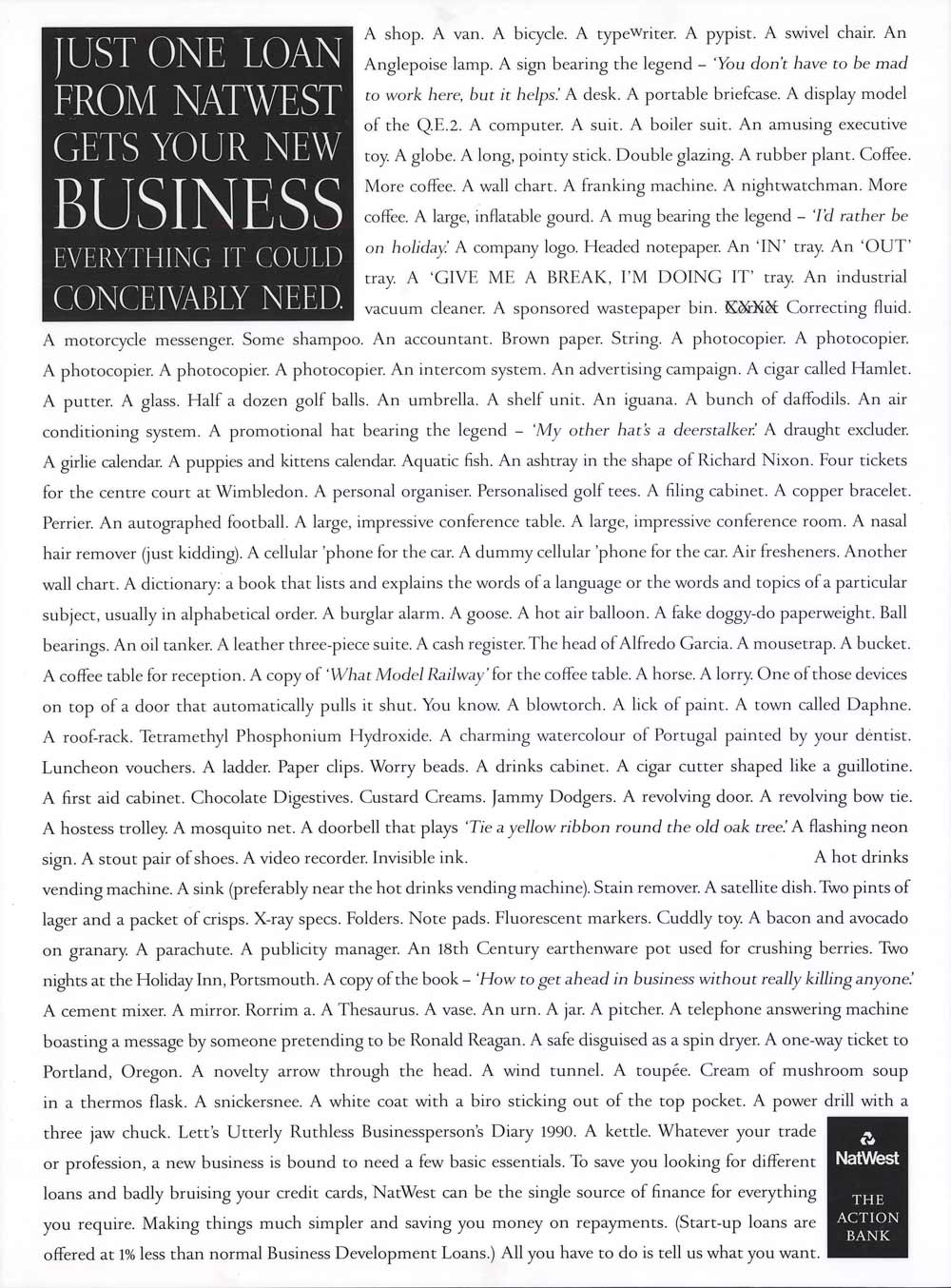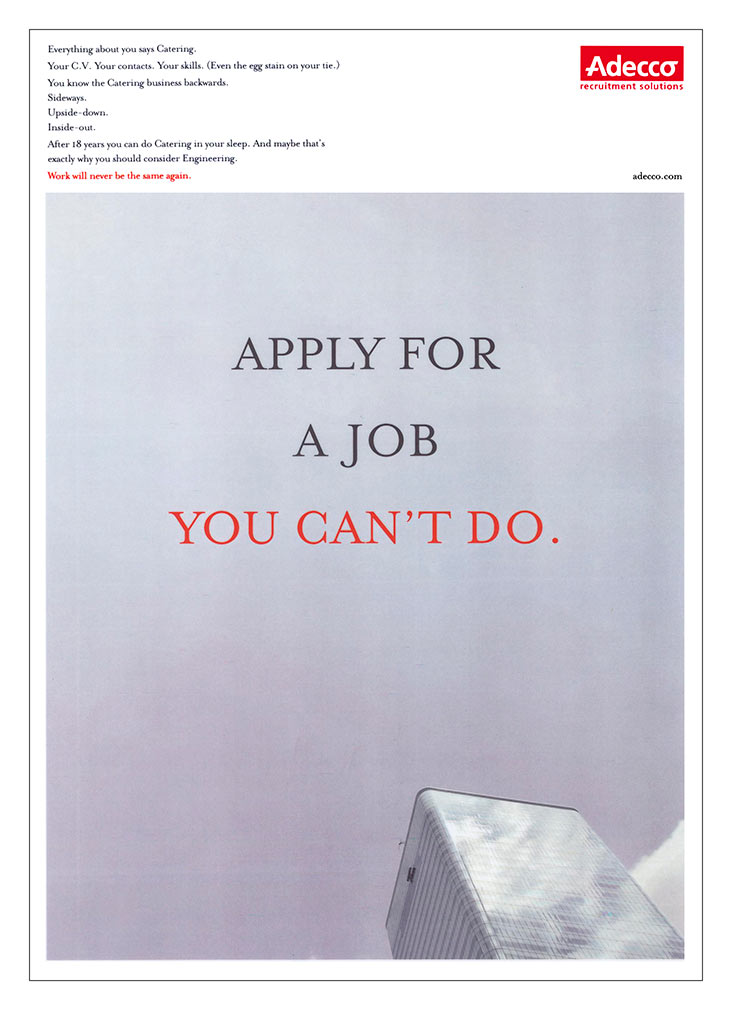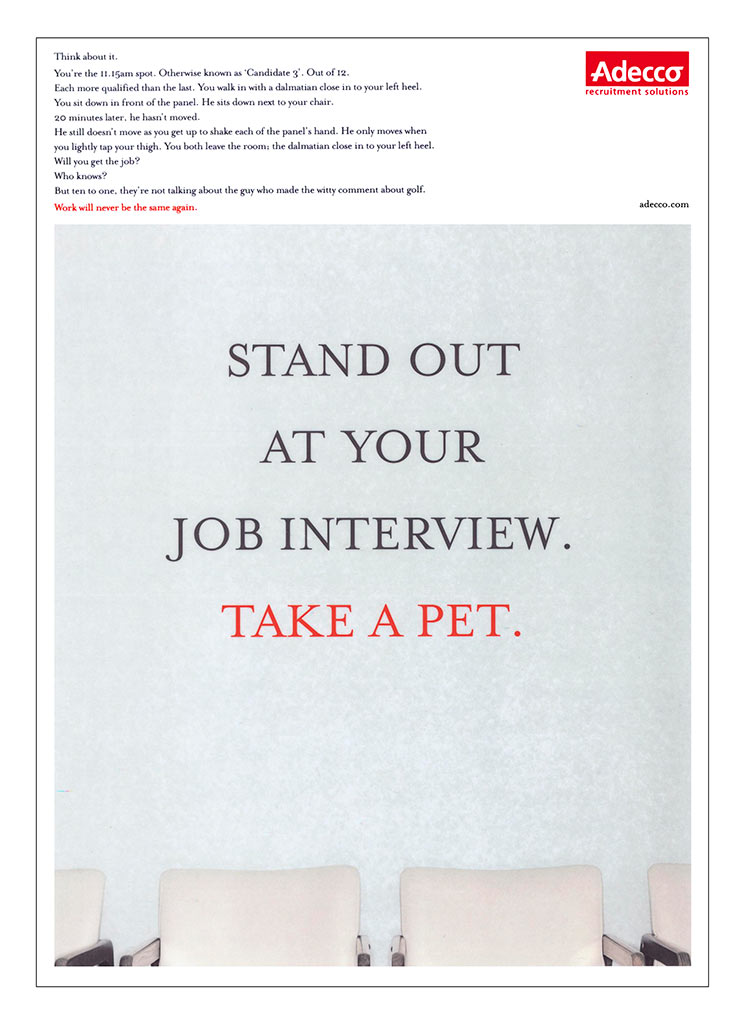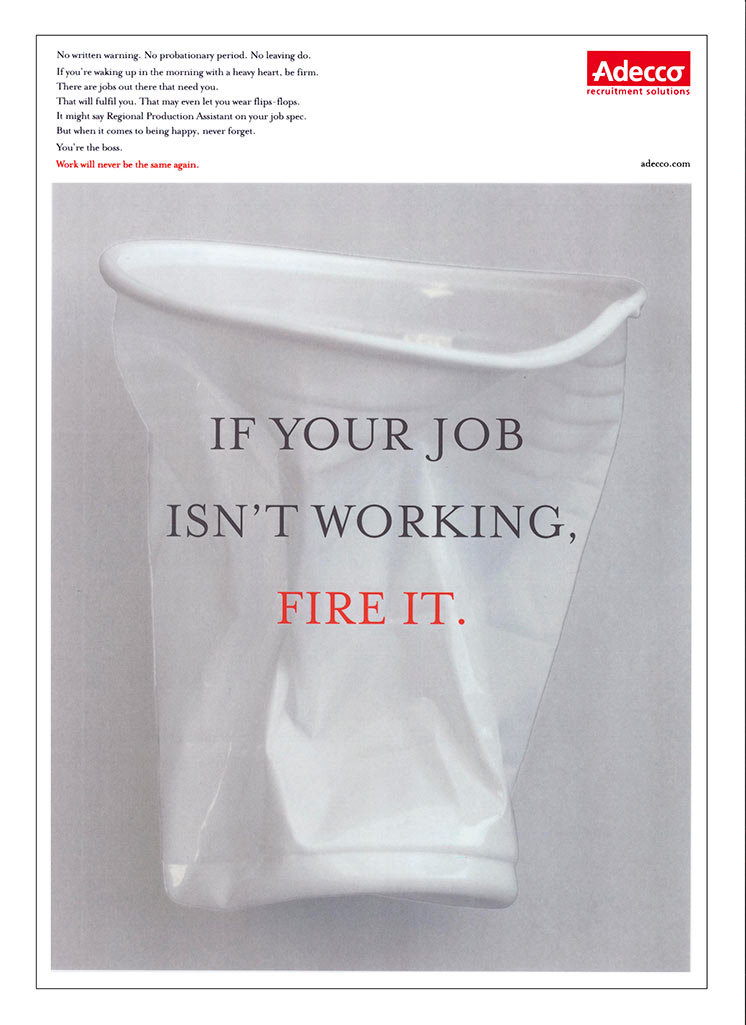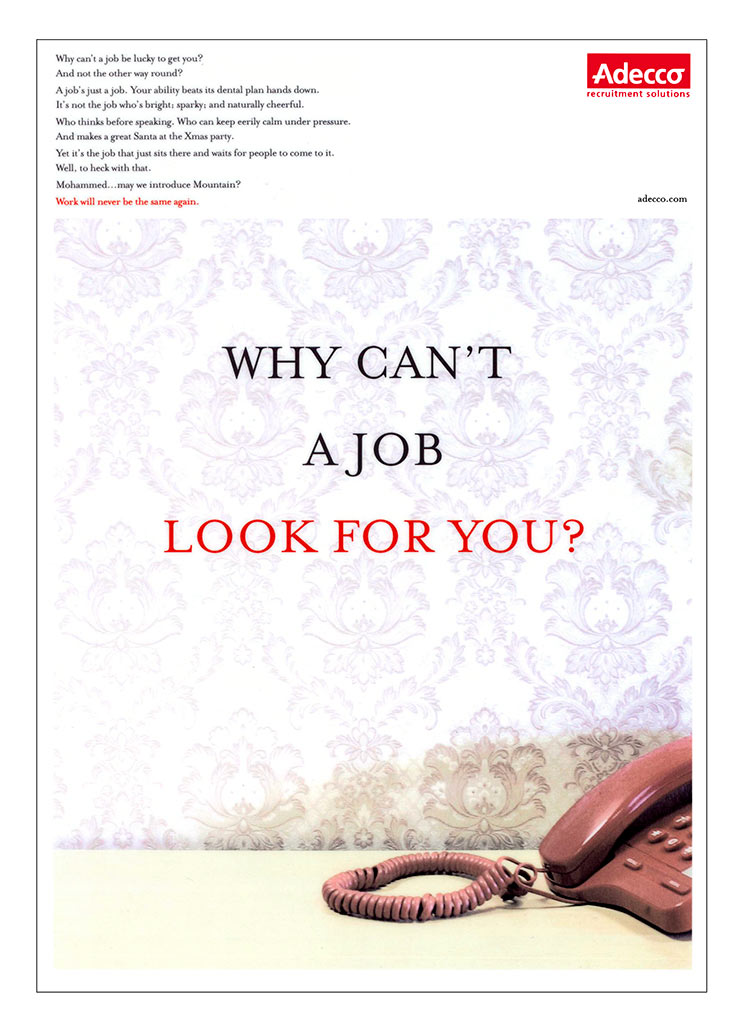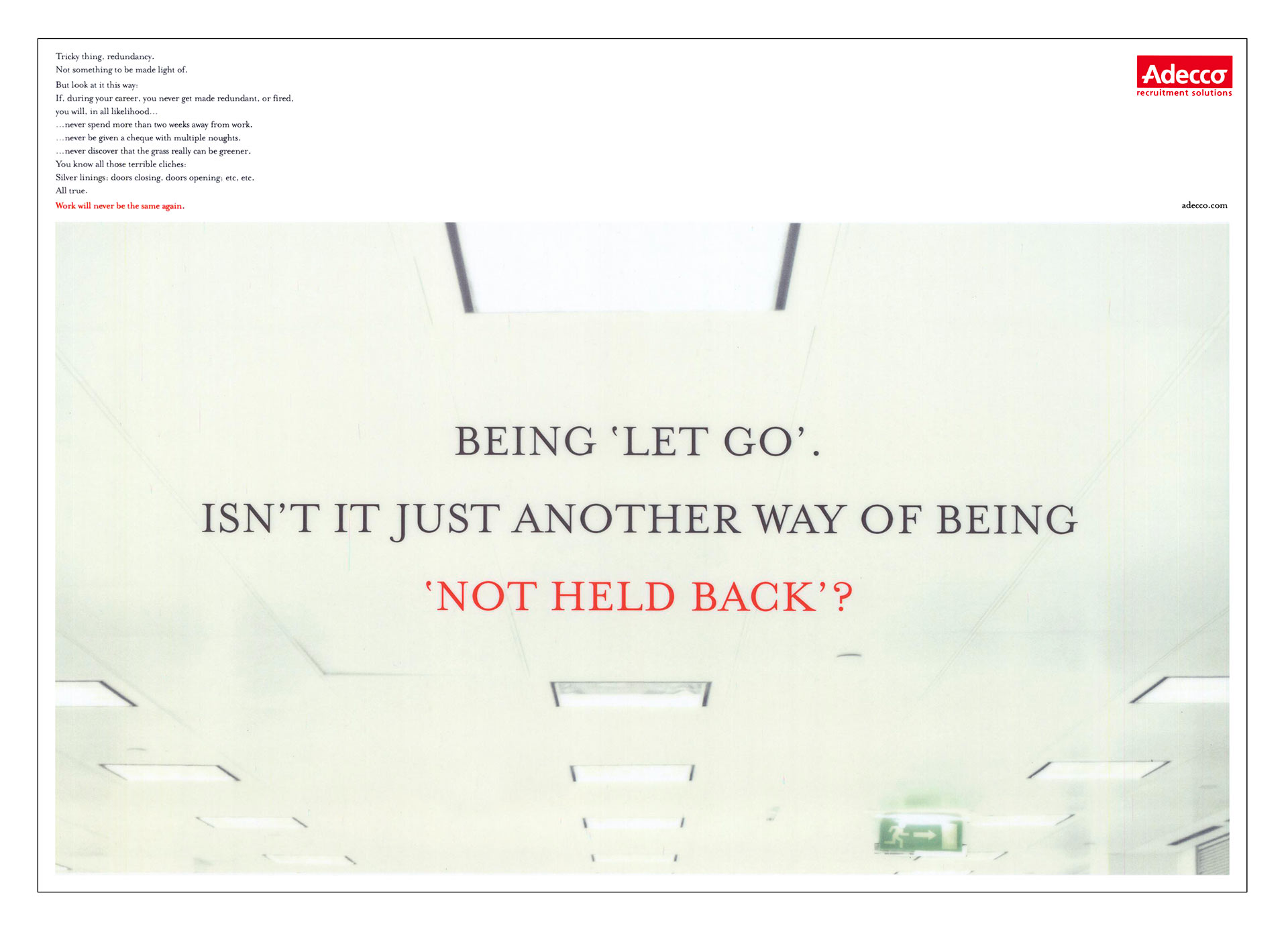ABOUT
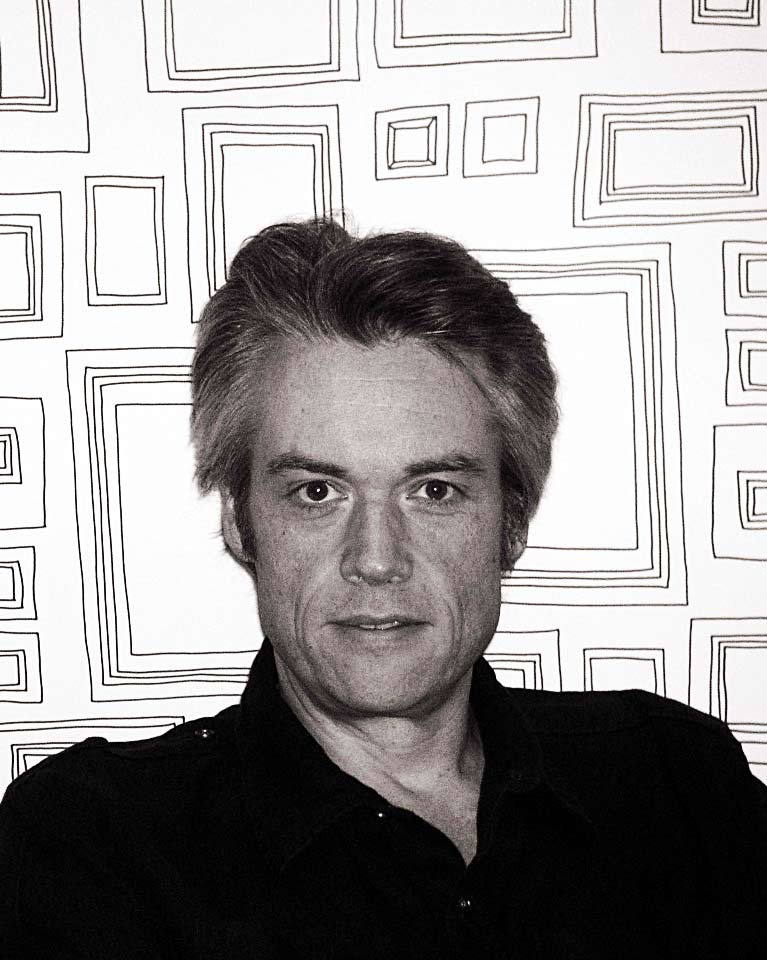
RICHARD RUSSELL
Writer. Copywriter. Creative Director
(UK; European; Global; Executive)
Richard is one of the last remaining people on earth to like advertising. In a world where the word itself has become dirty, where ads struggle to have any cultural impact, and where ad-blockers are rightfully seen as the only way to get these crass and uninvited distractions out of your online eye line, he refuses to give up on advertising.
Done right, an ad can be something useful and memorable that many millions of people can be touched by and respond to. No matter how many terrible ads are made, that truth remains.
In a long career, Richard has occasionally made things both useful and memorable, but maybe not as often as he’d like. He started at London’s BMP in the mid-eighties and over the year’s has worked at some of London’s greatest (and not so great) agencies on hundreds of different brands.
His best-known work was probably produced at Wieden + Kennedy, where he was responsible for much of the early years of the world-renowned Honda ‘Power of Dreams’ campaign – from the brand book that won the pitch, to the ‘OK Factory’ launch commercial, to the launch Print and Radio, to the later ‘Banana’ print ad, and the Diesel ‘Grrr’ TV spot. (Today, Richard’s original ‘Grrr’ concept of ‘Hate Something, Change Something’’ is still being taught to underprivileged New York kids in workshops.)
In 2010, ‘The Power Of Dreams’ was voted ‘Campaign Of The Decade’ by Campaign magazine. Despite this accolade, he says that it’s only his second- favourite campaign, but I think he’s just saying that for effect.
Outside of his day job, Richard has also written a successful golf book: MY BABY GOT THE YIPS. (A small, curious volume…it very nearly qualifies as a masterpiece – The Sunday Times.) If the Amazon reviews are anything to go by, it might be worth placing an order. The book was reprinted in 2014 as a ‘Sports Classic’, ten years after it was first published.
Richard freelances as both a Creative Writer and Creative Director. If you’d like a hand with anything then please just get in touch. His daily rate is less than it probably should be.
07768 266309
RECOGNITION
Awards are just one form of response and recognition. They are seductive and still the main industry barometer of our ideas, but they’re also destructive and increasingly devalued. Throw a stick down any London street and you’ll probably hit ten ‘award-winning’ Creatives. All of the awards I’ve won are nice, and I’d be a fool not to be particularly proud of one or two, but to judge our work purely by awards and obsess about their accumulation is to miss the point about what we do.
Below are the moments of recognition that mean the most to me. (There is some selective awards-boasting afterwards, where the accolade seemed to merit it.)
- Hearing stories of whole cinemas singing along to the Honda ‘Grrr’ commercial.
- Witnessing a cinema audience applaud the launch commercial of my new Gordon’s Gin campaign.
- Being rung up by a man who wanted a life size copy of a Gordon’s Gin 48-sheet poster so he could stick it on a wall inside his huge 16th century mansion.
- Bumping into someone outside of advertising that I hadn’t seen for years and discovering that he had stuck one of my long-copy press ads for Compaq Computers onto a wall in his office, and had urged all his colleagues to read it.
- Writing the most successful worldwide spot in P&G history – Biactol ‘Twins’. (Meaning the commercial most often run or re-made across all global markets.) This was also the first commercial I ever wrote.
- Making a million parents ring a government Child Literacy Helpline to ask for a leaflet. (The official govt. target is 25,000.)
- Selling 21,766 Honda Accord diesel cars in the UK in 2004, the year that ‘Grrr’ ran (bringing £544m in sales). The previous year Honda had only sold 518.
- Having a Land Rover finance press ad used as a question in an English Language A-Level paper.
- Having a Toyota Prius 90” film be the first commercial made for Europe to also be embraced and run by the Japanese market.
- Writing a quirky, anti-fashion, posters-only campaign for Mitchum which made the brand the fastest growing anti-perspirant in the sector, and led to Boots moving it from the bottom shelf to the top, where it remains to this day.
- Conceiving the Maltesers ‘Little Balls’ campaign in 1997 and seeing it still running 19 years later.
- Reading the national media coverage generated by some of my advertising ideas down the years.
- Reading the warm reviews and comments on my rather odd little golf book.
- Being invited to judge the Film category at Cannes Lions 2003.
TV & CINEMA
Honda Diesel – GRRR
A good old-fashioned factory visit led to the discovery of a fascinating product truth, which became a fresh and compelling insight, which became a weird and catchy song, which was placed over some trippy animation, which became the most awarded commercial ever made and, at the end of all that, led to astonishing sales of the excellent Honda Accord Diesel. To coin a phrase, isn’t it nice when things just work?
If you are interested in a more detailed account of how ‘Grrr’ came to be, including the amazing client presentation, then please click here:
Honda Brand Launch – OK FACTORY
I’d written a piece for The Book Of Dreams that was felt to be a good summary of what ‘The Power Of Dreams’ actually meant. The piece was chosen to be the launch film that would start seeding the Honda philosophy. I wrote a surreal visual narrative to go with the words, commissioned an amazing Japanese animator and added an obscure instrumental track. The ad featured no car and felt nothing like a car commercial – which was the whole point.
“One of the most original and powerful car commercials in years.” CAMPAIGN
Out of interest, it was Russell Davies, the Head of Planning, who suggested we use Garrison Keilor as the brand voice. Good call, Russell.
Maltesers
I took over the Mars account at D’Arcy in 1997 (alongside my Art Director Carl Le Blond) and we decided to re-invent Maltesers, whose ads at that point lived in a rather twee world of ballerinas and weight-watching women. Sometimes the best way to get an ambitious idea through a conservative client is to give them exactly what they want, but in a way they would never have expected. Which is what we did. ‘How would you like a campaign where every ad is full of the target audience eating and enjoying Maltesers? we said. ‘An idea that couldn’t be done by any other chocolate; where every story is based around the unique physical properties of Maltesers?
An idea with a light, playful tone of voice where we keep your long-running end line but we breathe new life into it? And did we say that every ad is full of the target audience eating and enjoying Maltesers? ’ And so began the ‘Little Balls’ campaign. 19 years later, it’s still going strong. The campaign concept was conceived by Carl and myself and these commercials are from the launch period with additional writing assistance from Trevor Webb and Steve Campbell. As a direct result of the new campaign, the value of the Maltesers brand for Mars rose from 72 million pounds in 1995 to 106 million pounds in 2000.
Macleans Toothpaste
I went to meet the client for the first time to talk about the brand’s problems and ambitions. It became clear that Macleans had fallen off everyone’s radar and it desperately needed a distinctive, well-branded – and cheap – idea to bring it top of mind. In the cab on the way back to the agency I wrote a campaign in my head. What if we shot a load of short films where people slowly and clearly say the word ‘Macleans!’ (in the same way that you’d say ‘cheese!’ for a photo) and, in so doing, reveal their lovely, clean and white teeth? And what if each film, in a funny visual way, could also highlight a different product benefit of the toothpaste? Sometimes, if you’ve led a pure and virtuous life, having an idea really can be that simple. These perfectly formed little films were shot by the brilliant Johnny Maginn.
Central Office of Information: Child Literacy – LITTLE MISS MUFFET
The government wanted Dads to take a more active role in helping their kids to read. This ad is one of those rare occasions where a script written for a pitch wins the business and gets made unchanged a few months later. Written with Carl Le Blond and shot by the legendary Roger Woodburn, the commercial got into the D&AD annual and also achieved unprecedented levels of response from the public. Back in the day, COI commercials had to achieve a certain level of direct response in order to justify the advertising expenditure. The phone number at the end of the ad had to generate at least 25,000 follow-up phone calls or the minister responsible would get a kicking. This spot triggered a million calls.
Diet Coke
At the turn of the century, Weiden + Kennedy introduced a new campaign for Diet Coke with a streak of Bridget Jones/Smack The Pony humour. This is my surreal offering.
Toyota Prius – A BRILLIANT WIP
This was a short strategic thought-piece written to help sell a brief to client. I eventually turned it into the ad itself, making a 90” film for cinema. There was only £50,000 for production so I just used titles, music and stock photography, animating each shot in a tiny, subtle way. The final film was run by every single European market, which never normally happened. It also became the first European Toyota ad to ever run in Japan.
Gordon’s Gin – GREENSTUFF
No gin. No people. No drinking. No photography. Just the colour green, some titles and a few sound effects (created by me, mucking about in a sound booth). Mark Tutssel and I conceived this campaign in a single day for the Gordon’s Gin pitch. The brief was the usual nonsense about ‘putting some fizz in your life’ so we ignored that and decided to just do something distinctive and insanely branded. Fair play to Leo Burnett and our ECD Giles Keeble for even presenting this madness, and hats off to United Distillers for taking a punt on it. (It helped that one of the clients literally could not stop laughing during the pitch.)
This was the launch cinema commercial. Four different 15” sections that each appeared between the other ads in the reel (making a 60” ad in all). The whole thing cost just £7,000 to produce. When I saw it in the cinema, the audience giggled through all the ads and actually applauded after the last section had finished. (Still my favourite moment from my whole career.) The campaign ran for 5 years in print and cinema, and we made 150 ads in all. I may have made more high-profile work down the years but, for me, this campaign is the best thing I’ve ever done.
Gordon’s Gin – SWIZZLE STICK
This film marked the start of a new advertising approach for Gordon’s, after the ‘Green’ campaign. It’s a more blatant, metaphoric attempt to communicate the ‘invigorating’ effect of gin. It’s pretty weird and all these years later, I still don’t quite know what to make of it.
Biactol Spot Cream – TWINS
Written with Neil Dawson almost 30 years ago, this was our first ever TV commercial. To this day, it remains the most successful global commercial in Procter & Gamble history. (Meaning the commercial most often run, or re-made, across all P&G global markets.)
Vortex Bleach – BOTTLE
Vortex was a dying brand. The client had no money but needed a big, stand-out idea that could kick-start sales again, or the product would be killed off. Mark Tutssel and I wrote this super-simple idea, but account management couldn’t sell the script. So we shot it for nothing in ten minutes at the end of another shoot. Account management still couldn’t sell it. So that was that.
N.B. A few months later, the industry held a one-off awards evening for ‘The Best Ads That Never Ran’ across multiple product and media categories. (Frankly, a weird and misguided concept, but hey.) Creatives across London pulled out their best ideas from the bottom drawer and, as would normally happen at awards dos, there was an overall Grand Prix for the best ad of the night, from any category. This ad won.
Mars – LIP SOFA
Directed by the legendary Richard Loncraine, this was all shot in camera.
McDonald’s McFarmer – HANDS
Written in 2014 for the German market, it’s an enjoyable, original, gag-rich, product-focussed idea that reversed a terrible business curve for McDonald’s and sold a great many burgers. A good old-fashioned, funny, hard-working TV ad. Nothing to be ashamed about there.
Colman’s Sauces – PRETEND
A cute little idea about imaginary ‘play’ food, designed to tackle the perceived notion that packet sauces don’t make ‘real’ meals.
Bonjela – FACE
Gurners with mouth ulcers: an idea whose time had come.
ONLINE
Drambuie – THE GREATEST GOLFER YOU’VE NEVER HEARD OF
A quick bit of history:
Drambuie is a honey-infused whisky whose original recipe was created 270 years ago by Bonnie Prince Charlie. On the run, after defeat at the Battle of Culloden had ended his hopes of restoring the Stuarts to the throne of Great Britain, the Prince was given shelter in Scotland by various highland clans, despite there being a huge price on his head. John Mackinnon, the chief of one particular clan, was rewarded by Bonnie Prince Charlie with the secret recipe to his personal liqueur. The unique whiskey, known today as Drambuie, is still made to the same original recipe.
This online film celebrates another inspirational figure who was cut from the same cloth as the proud Prince. An amazing man who had his own beliefs and did things his own way. His name was Moe Norman and his story and achievements defy belief; yet most golfers have never heard of him. Who better to tell his story than a barman, as he prepares a drink made with Drambuie and ginger beer.
‘This is phenomenal. I love brands that understand how to tell an intriguing story and through telling that story, elevate their brand, capture consumer attention and in this case deliver a product focused message. Why does this work for me? What do most bartenders do better than mix drinks? Tell stories. They could have taken some douche-y metrosexual bartender at a Vegas club or high-end London bar and had him tell us that we should try this drink because he thinks its cool. Instead they took a bartender we’ve all met at one point and gave us a reason to listen to him. Well done. Drambuie has never caught my attention before but today they own my conversations.’
Industry comment
Honda
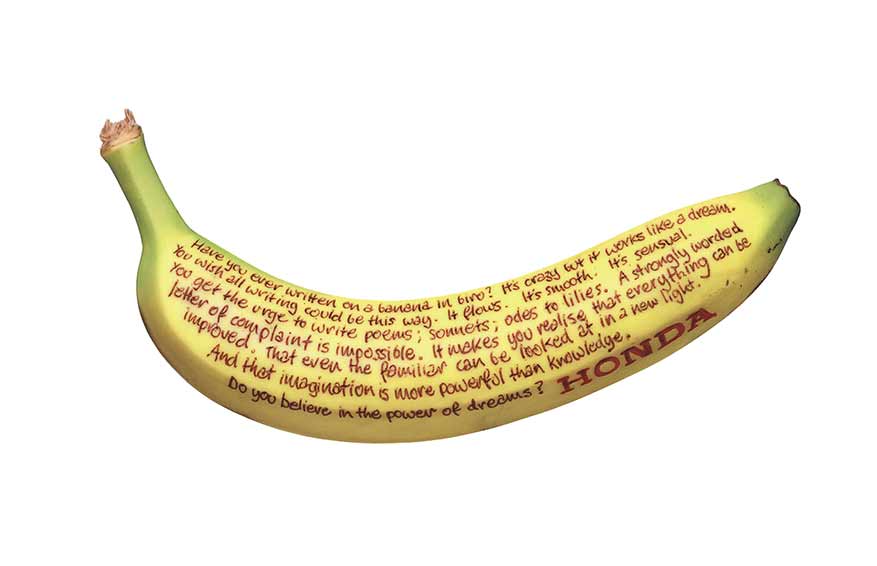
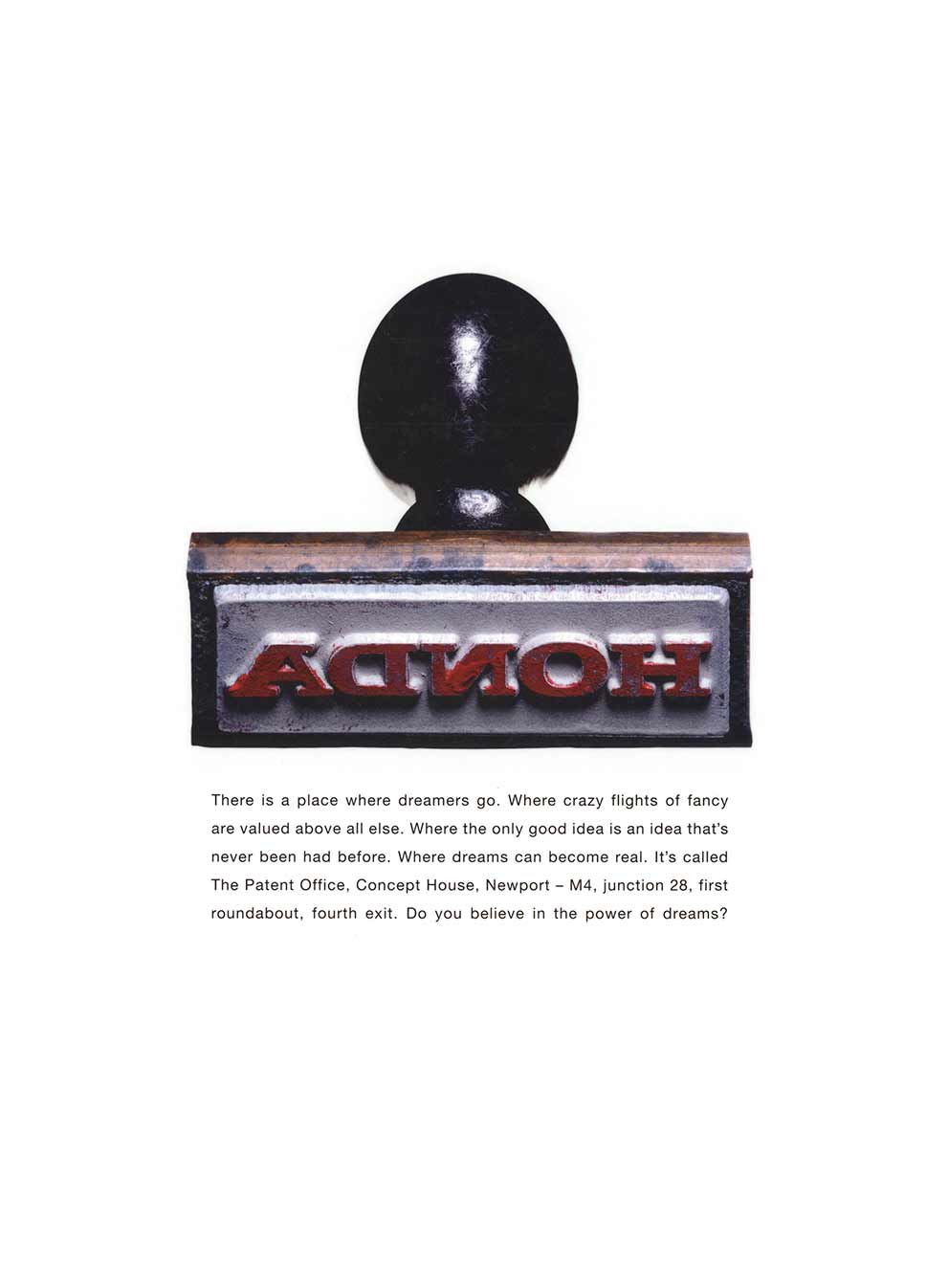
BANANA: It’s 2003 and I find myself working for the kind of agency, and the kind of brand, that welcome this kind of idea. I was in creative heaven. The copy wrote itself in 10 minutes and it was certainly novel to attend an internal Creative Review with a banana, not a layout.
It’s worth mentioning that, while it might be considered an iconic ad now, it wasn’t recognised in any way at Cannes, nor did it win anything at D&AD (though it did get into the book). Awards are never the proper yardstick to judge our ideas.
STAMP: It takes a confident, trusting client to approve an idea where their name is written in reverse
BONNET/SEAT/WHEELS/SPEEDO: These are a few of the launch ads in the ‘Power Of Dreams’ campaign. We wanted to make ads that looked different, talked about product benefits and spoke to people in a new, conversational, logical way. Out of interest, for many years every single Honda ad contained at least one question. It was one of the subtle, implicit ways that helped us to create the right tone of voice and position the brand in people’s minds as curious, thoughtful and open to all possibilities.
A few years after leaving W+K I was asked by the agency to give my take on this question:
WHAT MAKES A HONDA AD A HONDA AD?
It talks to people.
This is an advertising approach that separates Honda from virtually everyone out there (not just cars). Honda want to talk because they have things to say; because they do things differently; because telling people about these things will make them more likely buy their cars. It also serves to reveal their character and philosophy, allowing people to get to know them better and like what they see. Honda must never stop talking.
It makes people think.
This is bloody hard to do in advertising because you have to say something thought-provoking…and how often do ads do that? But time and again, Honda:
- Has a story or an innovation that makes you marvel, or
- Finds a fresh point of view that elevates a generic product benefit and makes you re-think its importance to your life.
Honda don’t just tell people things, they lodge new thoughts in people’s skulls.
It uses Garrison Keillor properly.
Garrison is there to force appraisal of interesting messages. While his words have a lovely lilt, listening to him is not meant to be a cosy and whimsical diversion, but an illuminating experience that should connect with people and change their outlook in some way. Yes, his unique voice will always stand out, but his words need power. There are different ways of doing this. Sprinkling his speech with joyful man-in-the-street colloquialisms is a great way of giving his messages resonance, but isn’t, by itself, enough. More than anything he needs to continually say things of devastating and undeniable logic and wisdom. Wherever possible he must only say things that deserve and demand to be said.
It asks questions in its ads.
What’s the best way to make people think? Ask a question. When Honda does something curious and new, the best way to seed the innovation in people’s head is to put it as a question. (Why can’t a gearstick be on the dashboard?) Not only does this engage people’s attention better, it reveals Honda to be full of restless, inquisitive minds. ‘Every ad containing a question’ is one of the things that consumers (and ad folk) tend not to notice about the Honda campaign – but it is actually one of the key aspects of Honda’s tone of voice that holds everything together. (Question: Has the campaign consistently stuck to this principle?)
It sometimes talks about life, but only with genuine insight, freshness and truth – not with obvious platitudes.
Putting life-truths in ads is a perilous business. 9 times out of 10 they are obvious statements that have been said by others and shed no real light on the human condition. When Honda talks about life, it must only do so with genuinely insightful wisdom, and then talk about it with wit and style. Thoughts that seem to have never been had before, but as soon as Honda says them, has everyone going ‘Yes, you’re right…I think I have always thought that too’.
It strives to do the hardest thing of all – combine an extraordinary message with an extraordinary execution.
Go back through advertising history and choose your ten favourite ads, in any media. There will be some incredible ideas on show, and some amazing strategies…but hardly any of the ten will do both at the same time. The very, very best Honda work tends to be a unique bringing to life of an already stimulating creative strategic viewpoint. This is the place where magic lives.
But sometimes it has to settle for finding an eye-opening way of looking at old themes.
The beauty of a car’s engineering had been tackled many times before – and then came ‘Cog’. The on-road capabilities of a 4X4 was much-visited territory – and then came ‘Orpington’. (The great ‘lost’ Honda ad.) Reliability has been plundered to death – and then came ‘One Day’. As someone once said, it is okay to do the ordinary in an extraordinary way.
It layers ideas on top of other ideas, until you cannot help but end up in a place that no ad has ever visited before.
Honda ads are rarely one-dimensional (even though they may have a simple idea at their heart). They have an uncanny knack of successfully fusing different ideas together; an approach that works because the foundations are always product-focussed and strong.
It has no set idea about the kind of ad it is going to be.
Its execution is a mystery until the idea has been had. There is no formula. This means that while there will always be certain constants that identify it as Honda (the tone of voice; The Power Of Dreams; Garrison, etc), the final incarnation should always surprise. Honda are thus reflected as a brand that embraces the new and the exciting, in whose company you never know what will happen.
It sounds like it’s going to be great even before you’ve seen it.
If you were to tell someone the idea of your new Honda ad before you went and made it, would they think it was going to be brilliant even before they’d seen it? Yes? Then it’s a Honda ad.
It revels in the detail.
Every little bit of every ad is made as good as it can be. When others have put their pens down, the Honda creative is still tinkering. This makes a Honda ad something that encourages total immersion, and rewards repeated viewings.
It is an idea, not a media.
A Honda ad is, first and foremost, an idea. It has as much right to be a tattoo, or an app, or a holographic brochure, or an invisible petrol cap, or a feature film, or a flag, or a new dance, or a blindfold test-drive, or a piggy-back on a robot…as it does a TV commercial. There is no earthly reason why the next wonderful Honda idea has to appear at half-time in the Champions League Final. Though that would be nice too.
It is made flesh by brilliant craftspeople outside the agency who make the idea even better.
All Honda ads are collaborative efforts. And the more W+K collaborates with the very best, the more amazing the work gets. (Those that know, know how much of ‘Grrr’ was down to the genius of Smith and Foulkes.)
It is not a car ad.
“No, Honda, please don’t make car ads. I want another of those inspiring, unpredictable, joyful (ads) that just make me love you unconditionally and make the world a better place.” MICK MAHONEY, ECD.
So…what makes a Honda ad a Honda ad?
It is irresistible.
- When it talks about something it tries to use thinking and language and luminous logic in such a way that you can only smile and nod, even as you are being sold.
- When it shows you something it tries to only show you the magical, the unexpected and the never seen.
- When it brings a message to life it tries to do so in such a way that it cannot be denied, ignored, or anything other than loved.
How dare an ‘ad’ try to do such things?
Land Rover
A finance ad that feels like a consumer ad. Simple thought; simple line; striking picture. I once visited a provincial advertising agency and this was framed on their wall. Apparently, in the world of direct response, it was a bit of a landmark ad. Years later, I also discovered that the ad had been used as a question in an English Language A-Level paper.
Atlantic 252
A Long Wave radio station whose point of difference was that their DJs talked less per hour than any other station. The use of a tape cassette in the visual ages the ad horribly, but so be it. For the record, no CG was employed – the guy we used really could fit a cassette into his mouth sideways. At the casting session, after every actor had told us about their latest acting jobs (Shakespeare; The Old Vic; etc, etc) we’d say, “That’s great. Now, would you just stick this tape in your mouth, please?”
Bonjela
That curious gloop that you blob over a mouth ulcer to numb the pain and heal the wound. We cast real professional gurners to pull the worst faces they could. Most gurners are elderly and can pull weird faces because they don’t have any teeth – the young guy here was just a weird freak-face.
Clark’s Desert Boots
My first print campaign, created with Andy McKay and shot by the legendary Helmut Newton (for an eye-watering fee). Our brief was to tell people that the famous Desert Boot was designed and introduced by Clark’s and that all other desert boots were just copies. The boot was inspired by the suede and crepe shoes that army officers wore in Burma in 1949 but rather than write a history-based campaign like the other Creatives, Andy and I came up with a tongue-in-cheek fashion idea. Success followed: not just a sales increase of 200%, but national media column inches and some prestigious industry recognition. There’s something about adding a little humour to style that really works.
Gordon’s Gin
Brand Campaign: What if a glass of Gordon’s & Tonic was just represented by the colour green? A left field thought that led to 5 years of odd, silly, clever – and insanely branded – posters and press. They stood out a country mile and generated a lot of media attention. One man even contacted the agency because he wanted a life size copy of the ‘Bloody Mary’ 48-sheet poster so he could stick it on a wall inside his huge 16th century mansion. We were happy to oblige. Wonder if it’s still there?
Compaq Computers
Compaq Laptops
Compaq Computers IT Support (B2B)
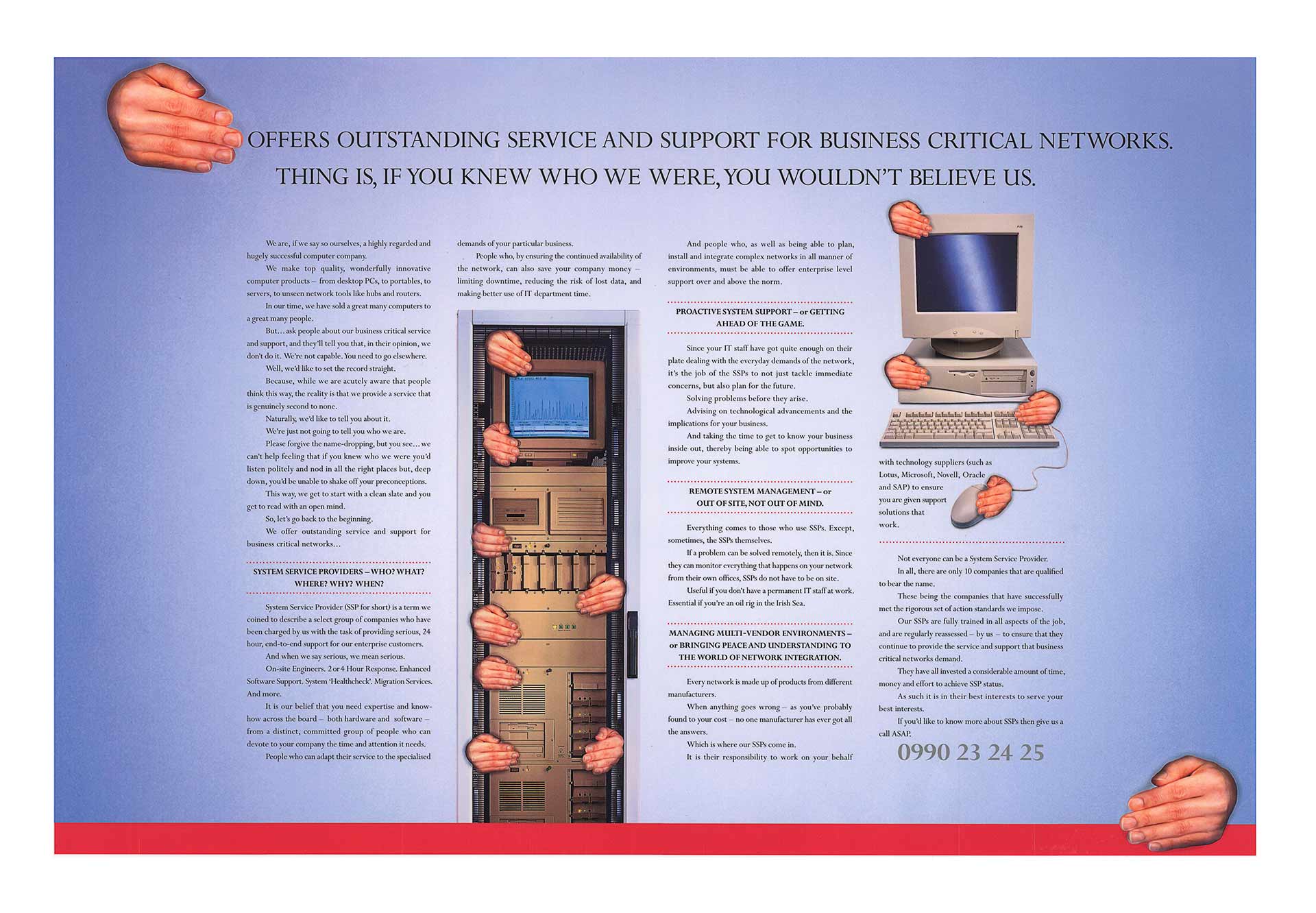
We needed to start overturning perceptions of Compaq as an unsuitable business brand. Companies weren’t installing Compaq computers because they didn’t think they were big enough to offer the right level of IT support. So we tackled the problem head on with endearing honesty. This ad was two consecutive double-page spreads.
McDonald’s
McDonald’s wanted a quick, one-off ad for a Charity dinner brochure. Not a very sexy brief and all the other Creatives ran away but Mark Tutssel and I fancied it. I guess we were right to think it was a creative opportunity as the ad went on to win a Cannes Gold, which was unheard of for Leo Burnett at the time.
Mercedes
A bunch of questions that explore how you think about driving. Of the three answers, if you keep find yourself saying ‘C’, then you are more suited to driving a Mercedes ‘C’ Class than you might have realised. An interactive idea before the internet had been invented. A labour of love and one of my favourite ads.
Mitchum Anti-Perspirant
Mitchum was a quirky little brand, lurking unnoticed on the bottom shelf of Boots. But it was a brilliantly effective anti-perspirant. So I celebrated its lack of style with a curious visual look and distinctive tone of voice. A succession of playful posters appeared and, just two years later, the brand awareness they had generated had vaulted Mitchum onto Boots’ top shelf, where it remains to this day.
Radio
Apart from the relatively recent Honda ads here, all the others were written by the Junior Copywriter me, many years ago. Funny how we tend to only give the radio briefs to the youngsters. I miss writing radio.
Honda Brand
Honda Oblonger 50sec Radio
Honda Doodle 50sec Radio
Honda Big Grin 50sec Radio
Honda GRRR
I was given a huge amount of freedom by Honda and W+K to write something fresh and un-addy. It helps when you have such compelling truths and philosophies to reveal.
The radio ad had another verse added to the song at the beginning. Think of it as the extended album mix.
Biactol Anti-bacterial Spot Face Wash
Sometimes, you don’t have to have a ‘big idea’. Just write the product story down in an entertaining way. Being silly definitely helps. In 1988 this was a very rare entry into D&AD for both Procter & Gamble and Leo Burnett.
UNAVOIDABLE
HOWSYERFATHER
TARADIDDLES
WHOJAMAFLIP
McDonald’s Breakfast
McDonald’s made a ton of radio and you always had a chance to do something fun. This is my favourite campaign of all the stuff I wrote for them. Using great actors was a smart move.
TOUCHY
THE IMPORTANCE OF EATING BREAKFAST
BILLOPHOBIA
LOG LADY


